- Jun 3, 2022
- 10 min read

The eCommerce customer journey and how to map it

Think about the last purchase you made.
How long did it take you to click ‘buy’? How many different sites, ads, emails, and stores did you check out before finally fetching your wallet?
Suffice to say that the typical buyer journey is anything but linear. Few shoppers convert right away, and every brand is challenged with adjusting their eCommerce marketing strategy to anticipate buyer movements both online and offline.
So, what can you do to stay ahead? Let’s talk more about what the eCommerce customer journey entails, and how to map your customer’s path to purchase when starting your business .
What is the eCommerce customer journey?
5 stages of the ecommerce customer journey, what factors affect the customer journey, customer journey mapping: why it’s a must, how to map the buyer journey for your business, example of a journey map.
Every so often, a buyer will take a relatively straight path to purchase. They'll search for a product, find your item, and within the same sitting, they'll complete the purchase.
But much more often, customers will be “pinballed” between various touchpoints. They’ll see between 6,000 to 10,000 ads in a day as they’re scrolling through their phones, checking their emails, or listening to Spotify. Then, once they decide to do some shopping, they’ll likely hop between Amazon, your site, and a competitor’s shop.
The eCommerce customer journey is the sum of all of these interactions (see our guide on what is eCommerce ). It begins with the moment a customer becomes aware of your brand to when he or she finally makes a purchase.
Some buyers will convert within mere days—while others may take several months or years. Tipping the scale towards the former outcome will require understanding the core stages and touchpoints of the customer journey and knowing how to make the best impact on your buyers.
Your customers’ overall journey can be broken down into five key stages.
01. Awareness
Your customer stumbles across your brand for the first time. Be it through an ad, social media, word of mouth, or SEO–they are now aware of your products. However, as noted earlier, many will not convert right away. Some may not even be looking to purchase anything at all.
At this stage, you’ll want to make sure you understand how people are finding your brand and who they are. Are they the buyer personas you expected to reach? How do demographics, acquisition source, and other factors affect what action your audience takes next?
While many visitors at this stage may just be “window browsing,” you’ve at least built some sort of brand recognition. Now it’s time to do something with it: retarget people, learn more about their interests, and guide them towards products that are most relevant to them.
02. Consideration
At this point, your buyer shows actual interest in your product. They’ve got their eyes on a particular product or set of products, and are deciding which one is worth buying.
Some may be trying to decide whether your item is a need versus a want. Others may be checking out product specs to make sure that your item is worth the price. Still others may be deal hunting or checking out options on competitive sites.
In any case, you’ll want to track which product pages people are spending the most time on, which products they’re comparing, and what other brands are on their radar. How can you convince them that your product is better? What can you do to build their confidence in your brand or incentivize a purchase?
03. Decision
Alas, your buyer makes a purchase on your site—assuming that the checkout process is easy and buyer friendly.
Your number one goal here is to make sure that the checkout process is seamless. Create a simple checkout flow, offer multiple (and secure) payment options, communicate your return policy, and provide all the information buyers need to feel supported by your brand.
Buyers should know when to expect their packages and any fees associated with their purchase. Don’t let any unwelcome surprises or lack of information lead to customers canceling their orders early.
04. Retention
Once a buyer makes their first purchase with your brand, they’ll ideally become a repeat customer . A positive customer experience—including excellent customer service, on-time delivery, and a multichannel marketing strategy—can work together to build customer loyalty .
Note that even though you’ve won the first sale, you’ll need to continuously earn a buyer’s patronage time and time again. Be consistent in your messaging. Engage buyers frequently. Offer incentives or employ strategies for upselling and cross-selling .
05. Advocacy
Happy customers have the potential to attract other happy customers. Buyers at this final leg of the customer journey are (hopefully) so happy with your product and/or service that they’re eager to spread the word to their friends and family.
Of course, this isn’t a passive activity. You’ll want to proactively nurture brand ambassadors by creating a customer loyalty program , hosting giveaways, showing appreciation, and taking other steps to inspire advocacy.
Your customers are a moving target. Between their unique preferences and backgrounds—plus their prior experiences with brands—there are tons of factors that shape the way they make their purchases.
As you track the various ways that customers interact with your brand, consider how trends like the ones below can make a big impact on the buyer journey.
Social and economic changes - e.g., the recent pandemic. These events tend to spur shifts in buying behaviors and expectations, as many types of businesses and buyers alike adapt to new realities. With each shift, consumers tend to get smarter and potentially pickier on what defines a good value and how to spend their money.
Convergence of online and offline shopping - Omnichannel retail isn’t just a concept anymore. Today, the lines between the offline and online worlds are increasingly blurred—with digital native brands like Warby Parker opening physical showrooms, and longtime retailers like T.J. Maxx investing more in online commerce. Curbside pickup, BOPIS, and in-store returns are just the beginning of what’s to come; brands should expect the customer journey to entail a greater mix of online and offline touchpoints, regardless of whether a customer originated online or not.
Corporate responsibility - Brands today are expected to do good. Inactivity or a difference in values could shape a customer’s engagement with your brand at any point of the buyer’s journey.
Choice paralysis - The proliferation of brands and products online have the ability to frustrate consumers. Make sure that your website is organized in such a way that customers know exactly where to find what they’re looking for. Make it easier for them to filter out noise and/or compare similar options. The last thing you want is for an overabundance of options—or poor site design—to deter your customers from buying. Learn more about combatting choice paralysis .
While customer journey mapping is an imperfect science, the benefits are undeniable.
In fact, 30% of surveyed retailers reported significant improvements in customer lifetime value and customer advocacy after investing in digital customer experience (CX). Roughly 23% reported an increase in average order size as well.
This exercise can help you to achieve multiple goal including:
Getting more clarity over how buyers interact with you - By carefully mapping your customer journey, you can gain a clear understanding of your buyers and their habits. A map helps you to see things from the buyer's perspective rather than your business’s perspective.
Improving customer retention rates - A map helps you to identify when and why prospective buyers are dropping. For example, an ill-worded message or one displayed in the wrong place at the wrong time could be all that’s causing buyers to regress in their journey. By making strategic changes and reducing friction in the customer experience, you can enjoy an easier time attracting and retaining buyers.
Sharpening your focus and organization - This exercise will force you to lay everything on the table–from all of your marketing campaigns to all the possible interactions a customer may have with your brand. From there, you can determine the health of each channel, who owns which touchpoint, and realistic goals for each event.
Increasing revenue - When you understand how buyers interact with your business in detail, you can more accurately cater your communications, offers, content, and promotions to influence sales. It’s all too easy to rely on assumptions or old habits when engaging customers. A journey map helps to shed light on biases and pain points that you may not have known were there before.
So how do you actually map the customer journey? Here are five steps to get you started.
Step 1. Describe your buyer personas
Before building a map, you must clearly define your target customer types. Are you looking to engage parents, young adults, or consumers with specific hobbies?
Your personas should include as much detail as possible. Make sure to base them around real data—not made-up, fake, or idealistic data. Talk to various stakeholders, interview your customers, consult social media, or perform user testing.
In other words, don't build a buyer profile based on what you think a customer should look like. Create your buyer personas using actual data you gathered from the places where they hang out and from talking directly to your target audience.
Step 2. Define the main character of your map
Now, you can decide which set of customers you’d like to analyze as part of the journey mapping process. The map will look different for each type of buyer you target, and trying to address all of them at once will only muddy the data.
To start, pick the most common persona (i.e., the most valuable or largest cohort). You’ll have an easier time collecting data this way, plus taking meaningful action from your journey map.
Step 3. Analyze on-site behaviors
As an initial step, check out the behaviors on your website and jot down the top pages that people enter your site from, where they exit or bounce, and which ones are the highest converting. Tools like Google Analytics and Wix Analytics can help to fill in these blanks.
To get more specific, make sure to filter your data according to criteria that’s most relevant to your buyer persona: geo, new versus returning users, and device (to name a few).
You may already start to see areas where people drop off and opportunities to optimize your site. You can additionally gain insight into what your buyer is more interested in buying based on where they linger on your site (though note that this could be heavily influenced by how accessible a page is from other areas of your site).
Step 4. List all other customer touchpoints
List out all the ways that your target buyer can interact with your company, both on and off your site. Include things like:
Social media
Review sites
Publications
Popup stores
Onsite banners
Physical stores
Marketplaces that you sell on
Help center
Loyalty program
Seasonal promotions
From here, you’ll want to list out all the possible actions someone could take from each channel. For instance, when someone interacts with a blog, he or she may subscribe to your newsletter, download a piece of content that you promote, click to another blog—or even request a demo. Alternatively, your visitor may bounce.
The purpose of this exercise is to audit all the CTAs you include on a single page, as well as links and other messaging that may influence a visitor’s behaviors. You’ll moreover want to look into whether reality aligns with expectations.
When you compare your list of expected behaviors with the data you gathered from Google Analytics, Wix Analytics, and other sources—do the results align? How can you better define the purpose of each channel, and match your goals with a visitor intent?
Step 5. Visualize the journey
Finally, you can document all of your findings into one easy-to-reference map. The scope of your journey map can vary depending on your goal. For instance, you could show the complete customer journey (as shown below) or hone in on just a part of it where you see the most room for improvement.
A map may cover everything from a buyer’s emotions, to their actions, to roles and responsibilities on your team at each stage. It can serve as both a tool for predicting buyer behaviors and keeping your team organized.
That said, there are several types of journey maps you can create:
Current state map - This shows how customers interact with your brand today. You could use it to compare behaviors between two different segments of buyers, or to uncover how customer emotions and behaviors vary depending on how they find your products (as an example).
Future state map - This illustrates the ideal journey that you want your customers to take. It helps your team rally around specific goals and identify critical points of a customer’s journey.
Day in the life map - This is similar to a current state map, except that it doesn’t start and end with a buyers’ interaction with your brand. It aims to understand all of their daily activities and lifestyles, with the goal of developing new, meaningful touchpoints.
Service blueprints - This takes a simplified version of one of the maps above, then adds in details about the various people, technologies, and processes that take place behind the scenes. The purpose is to audit and optimize how your team functions in the background to support the customer journey.
Let’s imagine that you own an online shop for pet supplies. You want to create a current state map in order to see how your core customers (new dog owners) are interacting with your brand. Your map may look something like this.
This helps your team keep track of the most effective campaigns, products, and channels. You’ll likely look to expand upon this map soon, as you get even more granular in your research or launch new campaigns.
There is no right or wrong way to create an eCommerce journey map. The framework outlined here is just meant to provide a good starting point. Once you have a baseline, you can continue to modify and rework your journey map to fit your unique business.
Remember that the customer journey is constantly evolving. Re-evaluate your eCommerce journey map once a quarter or at least once every six months. Aim to reduce friction in the customer journey and put assumptions to the test.

Allison Lee
Editor, Wix eCommerce
Allison is the editor for the Wix eCommerce blog, with several years of experience reporting on eCommerce news, strategies, and founder stories.
- Sell Online
Related Posts
8 proven ways to drive traffic to your online store
14 effective eCommerce marketing strategies for you to keep sales rolling in
4 strategies for abandoned cart recovery and how to reclaim those sales

How to Make Sense of the Ecommerce Customer Journey
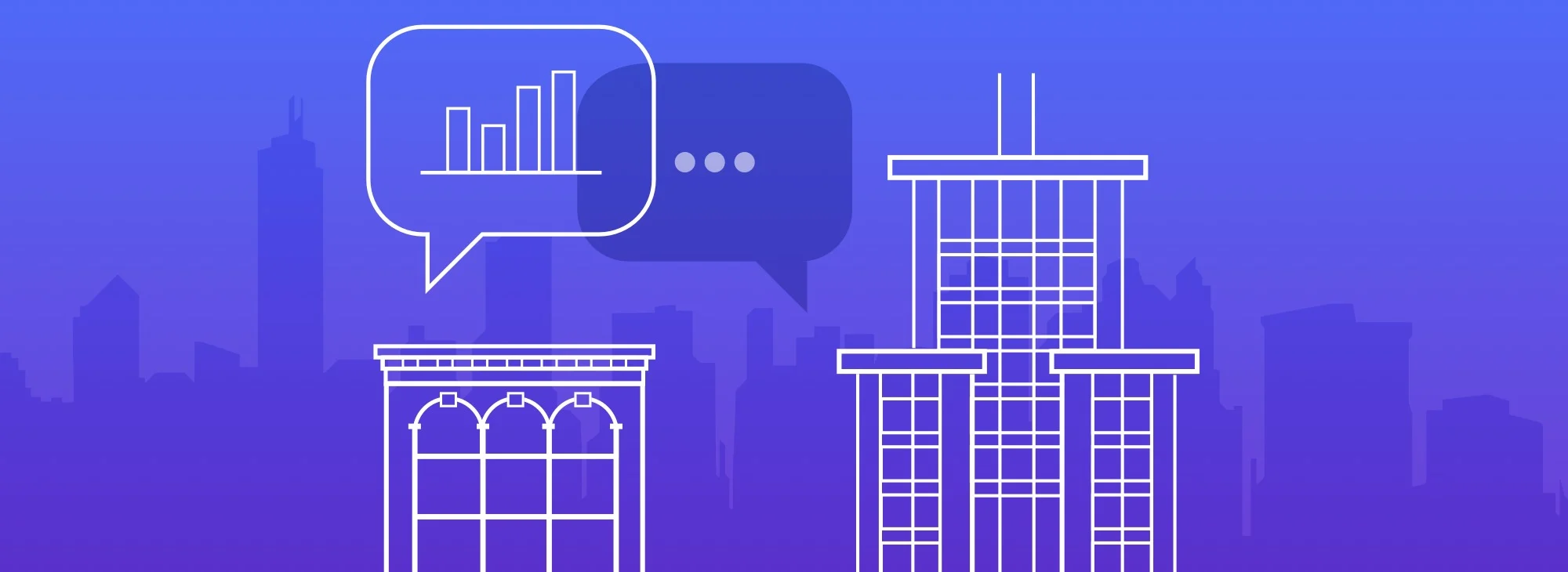
No one can deny how big the ecommerce market is. Global ecommerce sales are projected to nearly double to $6.5 trillion by 2023. Its share of total retail sales is also growing, particularly in the wake of the COVID pandemic.
So we know the sector is massive, but how complicated is it? Surely it is just a simple matter of finding the product you want, buying it, then waiting for delivery. Or is there far more to the ecommerce customer journey? There are multiple factors, from lead times to customer service, that makes an ecommerce business a good ecommerce business (or not).
Modern business, especially ecommerce , is about identifying and utilizing the best tools available. And that covers everything from live video conference software to good CRM management systems.
Smaller businesses need to find such tools without breaking the bank. Fortunately, they can choose from the best free business apps that will provide great service without denting the budget. Having the ability to be agile and to adapt to changes can be a major positive for your business.
If you look at a successful online retailer such as Larq , you will see a well-constructed site that is easy to navigate and that also offers links to their various social media platforms. This is a good example of how an ecommerce site should look. It shows they have looked at the customer journey and optimized their site to make it a positive one.
You need to know each stage of that journey, how those stages affect customer experiences and their relationship with you, and how you can improve the journey at every level and customer touchpoint . Let’s look at how the customer journey unfolds and what factors of customer journey mapping that are important for you to understand.
What is the Ecommerce Customer Journey?
That quote about life from Ralph Waldo Emerson can also be applied to ecommerce businesses. While it is easy to think about the destination—that purchase arriving in the customer’s hands—it is also very much about the journey and what happens en route to that final destination. Just as with life’s journey, every stage of the ecommerce journey has its own features and qualities.
Our customers no longer buy just a product, they buy the whole experience of being a customer, they buy your brand qualities, your mission and values, and more. They buy into the ease of your processes, the information you provide, the convenience, the quality of your aftersales (and presales if needed) customer service. In short, they look at the whole package you offer.
We all do process mapping for our businesses as a matter of course, so we should be doing the same for the customer experience. You need to understand every aspect of how your business operates, from dealing with logistics to ensuring your customers are happy.
And do not be afraid to use shortcuts. The very reason tools such as templates are offered is to make it easier for you to conduct business. They can save you time and money and it can be easy to find one that suits you.
It is not only the price of something that matters to them, it is everything that surrounds it, including how they access your site or app (and how easy it is to use), how you communicate with them across different channels, possibly even using companies like Slack , and how quickly you respond to their inquiries. In short, it is about providing an ecommerce customer journey map that meets all of their needs.
Focus not only on your customers’ journeys, but also on their relationship with you; that’s important whether you are a small business or a large international one. Investing in customer relationship management (CRM) software is highly advised, especially when you have a multichannel or omnichannel business.
There are also other aspects to consider. Many people now ask ‘ what is affiliate marketing ’, as offered by MaxBounty, and what is its place in online retail? If you use a strategy such as affiliate marketing, then you need to make sure that a customer’s journey is consistent across all the options open to them. Whether they find you via your own channels or through an affiliate.
5 Stages of the Ecommerce Customer Journey
So we recognize that the customer journey is far more than a simple buying process. We also recognize that we need to know how to develop a successful ecommerce fulfillment strategy that helps us win and retain customers. Knowing the main stages of that journey is essential to both mapping it and ensuring that it is as optimized as possible.
And when a business operates across many channels (omnichannel or multichannel ), you need to recognize that their journey may differ greatly depending on which channel they are using.
1. Awareness.
Every journey has a starting point, and in the ecommerce business, that starting point is awareness. This is the stage where the customer discovers your product/service and your brand. This is also where you discover how they found you. Did they find you via a search engine (thus validating your SEO strategy)? Did they see an ad on social media or in a more traditional medium?
You can not only see where they came from but also what behaviors they are showing once they have ‘arrived’. Do they look at particular landing pages that give you an idea of what products they are interested in? You could also describe this as the first learning stage; the customer is learning about your business and you are learning their preferences and needs.
2. Consideration.
In this stage, the customer begins to show real interest in particular products or services and move beyond general browsing. For example, with a cosmetics company such as Bliss World , they may start looking at the vegan skincare range, letting you see that this is their specific interest product-wise.
From your organization’s perspective, this stage of behavior allows you to analyze what works and what doesn’t. Those analytics can help you reduce bounce rates and encourage further investigation by the customer.
3. Conversion.
One of the magic words in ecommerce, but this stage is not always a guaranteed sale. In some cases, this stage can include those customers who have added a product to their cart (or to their wishlist) but have not yet proceeded to actually buying it. In most cases, though, we do consider this to be the stage at which a prospective customer becomes an actual customer who adds to your conversion rate.
It is at this stage that you as a business have to begin delivering on any promises you may have made to get the customer to this point. Part of that delivery is making sure all your processes, such as marketing, sales, customer service, etc., are aligned and are delivering the same message and quality of service.
4. Retention.
Another of those magic words. Having a customer make a single purchase is satisfying, but having them return again and again to buy is even more satisfying. This means they are very happy with most or all aspects of their journey and experience to date. From this point they begin to exhibit brand loyalty and may always look at your site before others.
The thing for businesses to be aware of at this stage is that providing an excellent experience once is fairly easy, but providing it time and time again is where the challenge lies.
5. Advocacy.
This stage is the Holy Grail of the customer journey but do not expect to achieve it with every customer. Most companies fall short at stage four, but those who do manage to retain customers are then hoping that those people become advocates and brand ambassadors with a high lifetime value. At this stage, your best customers are not only buying but interacting at a high level.
They will interact with you across most if not all of your touchpoints, such as your homepage, any blogs, social media, etc. More importantly (from your marketing perspective), they will be sharing information that you post on their own platforms and will actively advocate and talk about your products/services. That can also include recommending you to people and writing reviews.
Building an Ecommerce Customer Journey Map
An ecommerce customer journey map is a visualization of all the potential experiences a customer may have with your organization. Such a map also highlights the sequences those experiences are most likely to occur in. It can allow you as a business to identify strengths and weaknesses, and thus make improvements where needed.
That customer journey may consist of all the stages we previously listed or they may only cover some of them, if customers do not move to later stages. What you need to focus on is that a customer journey map will show you all the possible permutations of what the customer experiences, whether only one or two stages or all five.
How Do You Build Ecommerce Customer Journey Maps?
Being able to map the customer journey offers many benefits, but if you have never undertaken this exercise before, where do you start? What things do you need to consider before starting?
1. Perspective.
The first important thing to note is that you need your map to be from the customer’s perspective. So, detach yourself from your professional role and start the process as if you were an everyday customer. This can also help you understand the overall customer persona.
To do so, pick a product or service your company offers. Use various terms on search engines to see what results come up. Read any associated material including reviews, articles, and blogs. Then visit your actual site to view the product there. Take notes on how the various customer touchpoints felt and how the experience of visiting the site unfolded.
2. Research.
Put together a focus group that consists of your main demographic targets. Ideally, they will not know what company or brand has formed this group. Pick one of your products or services and ask the focus group to find and buy that item online. Observe and record how they find the item, what paths they take, and what outcomes unfold.
Once the focus group has finished their exercise, take the results and compare them with your experience from part one. By analyzing the two exercises, you can see if you and your customers think in the same way, and will also have a wider overview of touchpoints and interactions.
3. Understanding.
You now have a better overview of how customers interact with your business and how the various touchpoints perform. You now need to understand what those various actions mean in terms of engagement strategy. Did any touchpoint perform particularly badly? By analyzing the information you have collected, you can see what action you need to take next.
Your aim is to have your ecommerce site performing at an optimum level at every touchpoint you (and your customers) have identified. Those touchpoints can range from your own site to your social media platforms to search engine rankings. They can also include independent touchpoints such as review sites.
4. Goals and pain.
You now have some of the foundations of your customer journey map in place. But it is more than just identifying the touchpoints and engagements you have observed. You also need to understand the goals of the customer and the pain points they experience. It can help greatly if you list some of the insights gained from your observation and data collection:
Goals . What is the customer’s ultimate goal(s)? What is it they want to achieve?
Emotional response . What parts of the process make the customer happy? Or what elements make them unhappy or frustrated?
Pain points . What things cause issues for the customer and would they like to see improved?
5. Visualization.
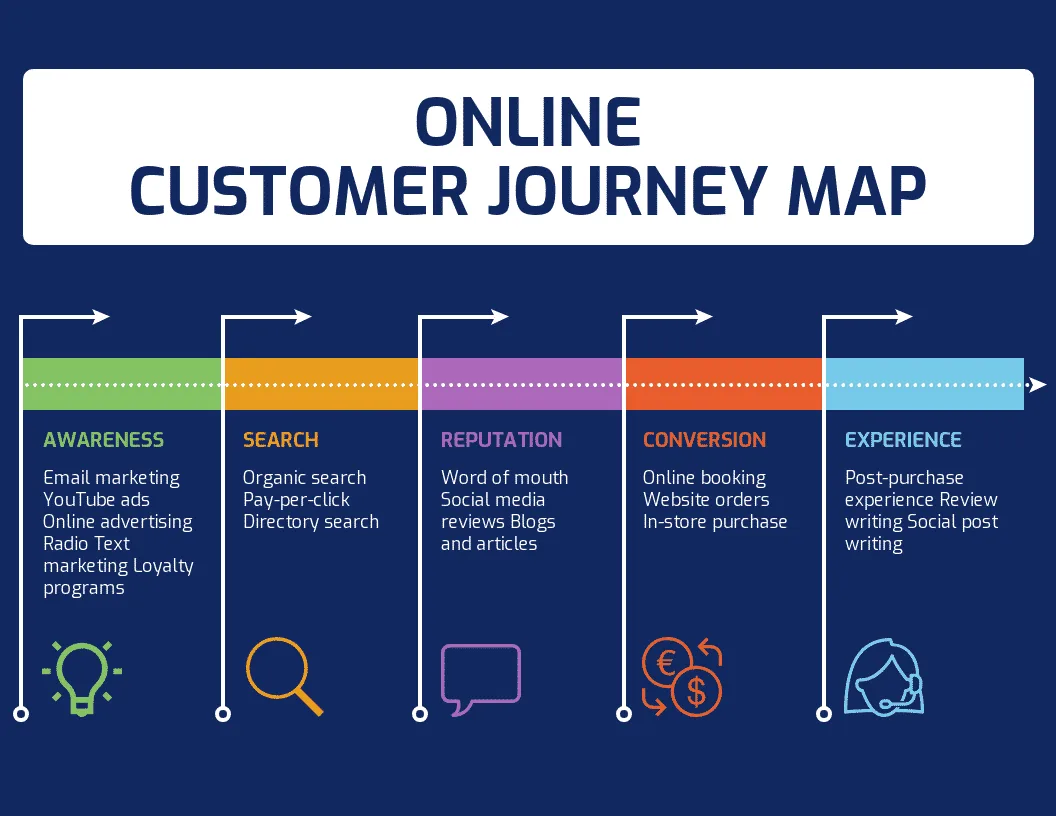
Image source
You should now have enough (likely a lot) of information that tells you what the customer experiences. The problem is that this information is not easy to digest, so you want to simplify it and create a visual that is easy to look at and understand. How you format it will depend very much on your own specific business model.
You may decide to create more than one visual, especially when you are a larger company and may have different teams working on different areas. For example, if you have a dedicated social media team, you may decide to create a journey map that particularly pertains to social media touchpoints, pain points, experiences, etc.
Why is the Customer Journey Important?
Do you really need to make a customer journey map? What benefits does it bring you? Knowing why it is important is as crucial as understanding the whole process itself. There are many reasons why it is not only important, but should be an integral part of your ecommerce business.
Efficiency . It can help you streamline the customer experience and journey by identifying if there are too many steps or touchpoints between the customer starting their journey and ending it.
Effectiveness . Does the required journey make sense to your customers? Acknowledging that we all do things differently, from how we search to how we navigate a site, creating a process that has a general effectiveness for most is a major benefit of a customer journey map.
Understanding . Knowing and understanding your customers, how they think, what they need, what they like and don’t like, is another crucial factor in determining how to create the best possible customer journey. In fact, this is an area where many organizations fail as they focus more on creating the perfect journey for them, rather than their customers.
Setting goals . A good customer journey map can help you identify and set better and more realistic goals. The combination of a human perspective and the hard data you have collected ensures you are more in touch with what makes your business thrive and grow. It also helps you monitor and tweak in real time as you move forward.
Planning . Every business has one eye on the future; new products and services, expansion, etc. Having an accurate customer journey map, and understanding it, means that you can more accurately focus on those future events.
Reducing pain . Pain points are the bane of any online stores and can lose you customers if not identified and remedied. You may be surprised by how many pain points exist once you have completed your journey map. Once you have identified them, you can take action to remove them or to reduce their effects.
How Ecommerce Stores Can Improve Their Customer Journey
For companies looking closely at their customers’ journeys for the first time, it can sometimes be daunting when flaws and gaps are identified that are having a very real effect on your business. Mapping the customer journey is one thing, but knowing how you can act on the data you have identified and improving the customer journey and experience is another.
1. Create touchpoints at every stage.
Anywhere a customer interacts with your brand is a touchpoint. Seeing an ad, visiting your site, looking at independent reviews, contacting your business to find store locations, and finally making a purchase. All of these are touchpoints. Going back to the five stages of the customer journey we discussed earlier, you need to have touchpoints for each stage.
Each touchpoint serves a purpose and plays its part in optimizing the overall customer journey. So each touchpoint you create has to fulfil its specific purpose (ad attracting interest, checkout process quick and uncomplicated, etc.) Ensuring you have multiple touchpoints that fit their respective stages and work properly is essential.
2. Optimize your website for every device.
It is worth remembering that around half of all internet traffic originates from mobile devices . So if your website performs poorly when accessed from a mobile device, you are in effect alienating half your potential customer base. Optimization is key to offering a good experience to all.
It can help to look at great websites that are well optimized, such as Skullcandy , so you can see what is needed. The screenshot below shows how well you can view their products from a mobile device, making online shopping easier for customers.
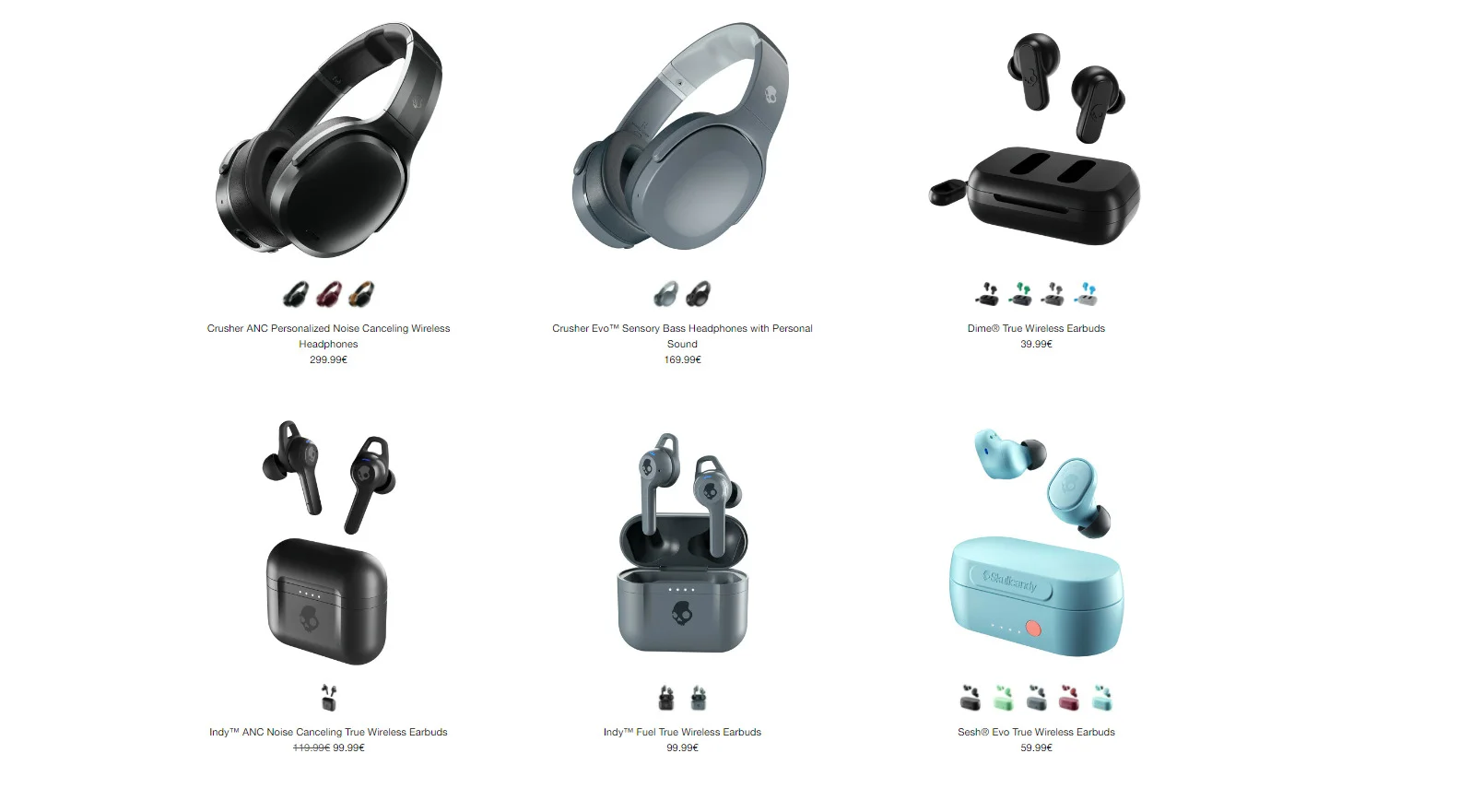
And there are a few factors to take into consideration when optimizing your site:
Test your site . Knowing your site works well on mobile devices is absolutely crucial. You can do this manually at first simply by accessing your site via several different devices. Look especially at loading times and how the site looks on a small screen. For more in-depth testing, use Google’s free testing tool .
Web host . Make sure your web host offers the speed and resources required to make your site fast and responsive. A slow and unresponsive home page and website will put customers off. You also want a host that guarantees the minimum of downtime.
Apps . Consider launching an app to complement your website. They are not as expensive as you think and they can help boost both sales and engagement .
3. Use proactive customer support.
Don’t wait for problems to happen and for customers to contact you. Anticipate the problems or questions most likely to occur and provide answers and solutions that will keep your customers happy. Offering proactive customer support has a number of benefits.
Better customer retention rates. Being proactive means you’re more likely to have happy, loyal customers.
Less calls to your support team. By solving problems proactively, customers can see the solutions themselves and thus will make less calls to you, freeing up your team to deal with more complicated queries and also reducing waiting times.
More first time customers. People talk about the good service they receive and that includes proactive support. When satisfied customers share their experiences, that can lead to new first-time customers.
Increased productivity. Proactivity means better communication. And that means your team has more time to listen to and help customers who call and to collect more information and data.
Communication. You are probably already using video and messaging collaboration tools for sales teams , so why not ensure you also have great tools to communicate with customers. Chatbots and AI are great ways of proactively helping your customers find information.
4. Personalization is key.
It is neither a secret nor a surprise that people like a personal touch, and that is true whether in ‘real life’ or in online shopping and ecommerce marketing. That means going beyond using their name (which you can do with website automation or in marketing emails) and also recognizing their particular interests and buying habits.
Using tactics such as dynamic content marketing, which can customize content according to buying preferences, location, age, gender, etc., means you are offering a personalized approach that can lead to increased sales and better customer retention. Automation and analytics can be the two drivers when it comes to personalizing the customer journey, so use them wisely.
Smaller businesses may feel they could be overwhelmed by these demands, but with so much technology and automation available on a budget, it is not that difficult to do. There are many mobile apps for small business owners that can help with factors such as communications and social media posting, so see what tools can both help you and save money that may be spent elsewhere.
5. Gather data as much as possible and be flexible.
Data is not a one off exercise. Collect as much data as possible in the early stages, but keep collecting it always. Collect data not only on customer behavior and the customer lifecycle, but also general info via surveys, polls, etc. on your social media platforms and via email. The data you collect is a hugely important resource and offers you several benefits and potential uses.
And it is, of course, not just about collecting data, but about analyzing it and interpreting it efficiently. Consider using one of the many tools, such as Google Analytics, to help you with this. Identify what metrics, such as KPIs, matter most to you. A good KPI helps show your business is healthy.
Data is not just a collection of information, it offers tangible benefits that can help your business grow by developing strategies for the future .
Understand the market . Collecting and analyzing consumer data helps you understand how your ideal customers behave online. It helps define and segment particular demographics, understand better what customers want, and see ways to improve the overall experience throughout the customer lifecycle.
Expand your database . The more information you have on customers, the bigger, and more efficient, your database is. And with detailed data, you can segment your customers (and potential customers) into groups that make more personalized strategies, such as dynamic content marketing, easier to achieve.
A larger database allows you to use a variety of strategies. For example, instant messaging can be a great way to boost your ecommerce sales.
Better marketing . By constantly collecting data, you get better insights into which of your marketing strategies and campaigns have worked well. The more data you have, the easier it is to identify which sorts of campaigns are best, and what platforms reach more of your ideal customer base and generate more leads.
Those campaigns could be via social media or you could identify what sort of email campaigns best drive sales.
Customer relationship management is perhaps one of the most important factors for ecommerce businesses to consider and it is worth investing in good CRM software to help with this. You may understand the customer journey, but managing that journey on an ongoing basis is a big task.
Aim to be consistent and to ensure you provide the same positive customer experience throughout every journey. Your online store has to be as accessible and helpful as any physical store would be. And that applies to every channel, platform, and touchpoint where your customers interact with you.
Ecommerce businesses range from massive multinational corporations to small solo entrepreneurs. Customers range from occasional purchasers of low value items to regular buyers of high value goods. No matter who you are or who they are, you should be aiming for parity so that every journey and experience is positive.

Pohan Lin is the Senior Global Web Marketing Manager at RingCentral, a global UCaaS, VoIP and video conferencing solutions providers. He has over 18 years variety experience in web marketing, online SaaS business and ecommerce growth. Pohan has a passion for innovation and communicating the impact that technology has in marketing.

eCommerce Customer Journey Map: Definition, benefits and structure
What changes does eCommerce, the end of the fourth industrial revolution, bring and how should marketing tactics adapt? Let’s go through some valuable insights about customers, both online and offline.
Customer Journey definition
It represents the stages experienced by a prospect or customer until performs the desired marketing conversion.
Why is important to know and map the eCommerce Customer Journey?
More and more physical stores have migrated and still migrate online, both due to the pandemic and the need to adapt to the more demanding customers.
People have completely changed the way they acquire products and services online: today. they expect quick customer service, look for the best prices and discounts, but also more precise information.
What is the eCommerce Customer Journey Map?

It is a visual representation of how the consumer interacts with the store, products and other business assets while completing a buying cycle.
How to use the eCommerce Customer Journey Map
You may see below a chart I created as an example of mapping your customers’ journey, from simple prospects to real brand advocates.
My recommendation is to perform this mapping on a decision-making model such as AIDA or hierarchy of effects and assign for both touchpoints and marketing tools. In most projects there are 6 important stages:
- Awareness – Usually it is built via advertisements, customer reviews and word of mouth;
- Knowledge – Content marketing is the key here;
- Preference – Benefits (What’s in it for me / WIIFM) or brand equity are playing a key role;
- Conviction – Your brand’s unique proposition or USP or non-refusable offers determine the prospect to continue;
- Purchase – eCommerce tools in your shop will get the customer to buy;
- Repurchase – The best proof of customer loyalty.
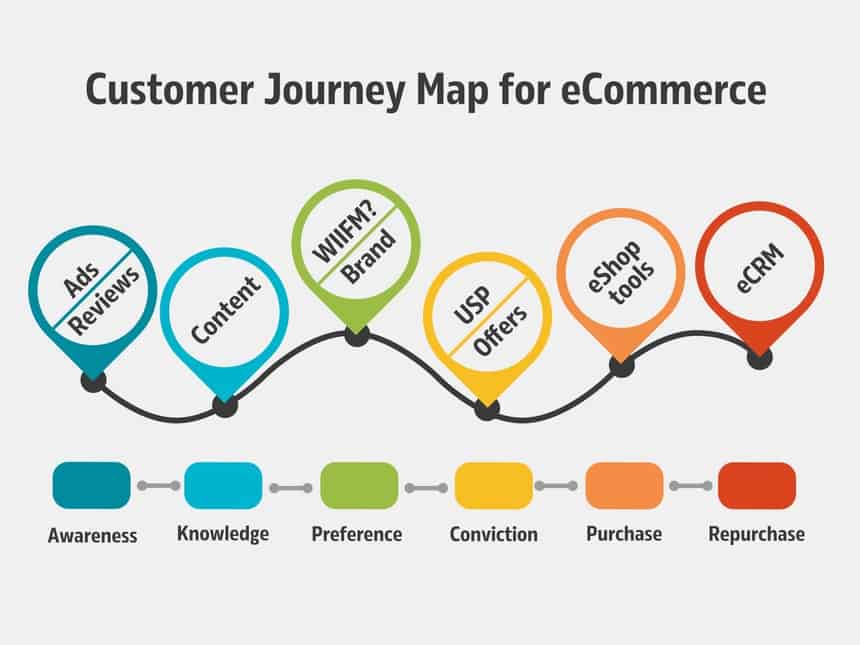
How to build the eCommerce Customer Journey Map
1. Build a document template where to record customer journey stages (a Google Sheets or Excel spreadsheet).
2. Write down all touchpoints between you and your customers (owned media and paid media).
3. Review customer messages and comments received on Social Media, on email or via chatbot.
4. Classify consumer feedback and interactions pre & post-conversion . Use a hierarchy of effects model (or AIDA ) in order to map better the customer’s decision.
5. Place the categories of interactions in a list or flowchart that comprises the decisional stages.
6. Share this customer journey map to each team that interacts with online customers.
The reason to show the customer journey map to your colleagues is to make sure you get everyone on the same page. For example, the logistics team may not know all details of the online process, while the marketing team may not know the customer’s behaviour after sending a complaint. This way, all eCommerce employees find out how the system behind the company works.
7. Discuss internally the generated map and collect feedback.
8. Prepare the final document and present it internally.
Benefits of mapping your Customers’ Journey
Following the 8 steps above will allow you to get in the shoes of real consumers, better understand their needs and pain points so you can find ways to overcome them.
Mixed user journey: Mobile and desktop devices
Bear in mind that today most customers interact with your brand cross-channel and via multiple devices, using both eCommerce and brick & mortar (offline) touchpoints.
A common eCommerce customer journey scenario
For many businesses such as YMYL (financial services, medical services) a customer can be attracted by your product advertisement on Social Media, could check the product page on the website and bookmark it via his or her mobile phone, but will make the purchase from a desktop computer.
Why is this scenario happening often? Because in non-impulse categories such as the ones listed above, customers require clarifying important details before purchasing. I saw this behaviour a lot with healthcare customers.
eCommerce Customer Journey statistics
Let’s take a look at a few statistics and see what can be learnt from successful in-store campaigns.
The experience offered to the consumer is of great importance. Research from Salesforce’s 2018 State of the Connected Customer study showed that:
- 69% of customers want to talk to the company in real-time;
- 80% say are attracted by the experience in the relationship with the company;
- 60% of consumers in the UK expect their experience to be connected. If we want to optimize the entire customer journey process, we need customer journey mapping.
A workshop to design your Customer Journey Map for eCommerce
This process can be a complex or simple one, depending on how many people or suppliers are involved in this process, how much data you can collect and obviously the number of contact points between your consumers and your brand.
I think a workshop split into two consecutive days would suffice. The audience should be a mix of 4-6 colleagues from marketing, customer service and operations.
You, as a digital marketing expert, should be the host.
1.1 Define in clear terms the purpose and objective of the map
Start with a known problem of the web store, keep everything in short lines. As a rule of thumb, if you have 6 call-to-actions on the website that send the visitor to 6 landing pages, it should be enough to map the customer’s journey for your website.
Write two sentences about what you are looking for in this mapping to have it at hand whenever you need it. This is the right time to report what doesn’t work, any technical bug, or pages that don’t convert.
1.2 Collect consumer information and insights
Carefully analyze the collected data as part of the mapping process. Google Analytics, your web store analytics and CRM data should give you plenty of insights regarding the user journey of your website’s visitors.
1.3 Set the team’s expectations for the mapping exercise with examples
It is essential that people be part of the process from the very beginning and understand what is expected from them.
A customer journey map will be much stronger if it is made with a team that is on the same page.
2.1 Start mapping the eCommerce Customer Journey
Write on a board or in a wall-projected Powerpoint presentation the most important events and behaviours of your consumers:
- relevant website interactions;
- opportunities that arise;
- limitations in technology they have encountered;
- questions they had;
- positive experiences;
- pain points.
2.2 Finalize the map with a two-hour exercise
- Transfer the map to a Customer Journey Template;
- Share it with the whole team;
- Set the next actions to be taken after the workshop.
An example of a real Customer journey in eCommerce
A customer’s journey does not take a linear form, from point A to B, but is cyclical or back and forth, multichannel and sometimes quite difficult to visualize.
If we are talking about an online store, we need to identify and use:
- the buyer persona ;
- questionnaires;
- A/B tests conclusions;
- website funnel progress (what actions they take on the website, where they get stuck).
In eCommerce, we can divide the map horizontally into three areas regarding the customer:
- expectations;
- emotional state.
In order to understand the consumer as a human being, we need to go beyond the website experience and watch what the buyer persona does at home.
Let’s see an example of a housewife in London, a mother of two that has also a part-time remote job.
At 6:30 AM she takes care of the kids, prepares breakfast. At 8:00 AM her kids go to school, so now she can focus on herself and she has plenty of time to enjoy a coffee and online entertainment. She also reads an email from the real estate agent her family contacted, as they look for a new apartment to rent. After receiving an offer, she searches the Internet for more information, but she is disappointed by the agent’s apartment proposals. These actions trigger an action on a different channel: a Facebook Messenger voice call with her husband.
At noon she has some free time, so she takes her bike and goes to the mall not before updating the shopping list on her mobile phone. This time she is also in a hurry because when she returns must focus on her job.
In the evening she prepares dinner with her family. This action is followed by accessing Facebook and text messages with her friends, an activity where she is very relaxed.
If we follow this whole course throughout the day, we realize that not only what happens online needs to be followed, but what worries people emotionally and the actions they take on a daily basis.
Think thoroughly about your customers in order to understand their eCommerce journey only. When putting yourself into their shoes, try to anticipate what they might feel as well.
Last but not least, do not forget that the Customer Journey Map should include both digital behavior and emotional state.
- Customer journey – Hubspot
- Salesforce – Customer journey mapping
- Author: Stroe Stefan
- Last update: 18/04/2021
Stefanstroe.com – All rights reserved

- Privacy Overview
- Strictly Necessary Cookies
- 3rd Party Cookies
This website uses cookies so that we can provide you with the best user experience possible. Cookie information is stored in your browser and performs functions such as recognising you when you return to our website and helping our team to understand which sections of the website you find most interesting and useful.
Strictly Necessary Cookie should be enabled at all times so that we can save your preferences for cookie settings.
If you disable this cookie, we will not be able to save your preferences. This means that every time you visit this website you will need to enable or disable cookies again.
This website uses Google Analytics to collect anonymous information such as the number of visitors to the site, and the most popular pages.
Keeping this cookie enabled helps us to improve our website.
Please enable Strictly Necessary Cookies first so that we can save your preferences!
Learn / Blog / Article
Back to blog
5 practical ways to improve your ecommerce customer journey (with real examples)
Either as a consumer or an online business owner, you’ve experienced the ecommerce customer journey.
As a consumer, you came, you saw, you purchased.
As an online business owner, you watched potential customers come, and see, and purchase—or you watched them exit your site, leaving you asking: why?
This article shows you how to find some answers. To keep it practical, we use real examples from designer furniture store MADE.COM, whose former Head of Digital Experience, Spencer Wong, wanted to improve the experience for MADE.COM customers across each stage of their journey

Last updated
Reading time.
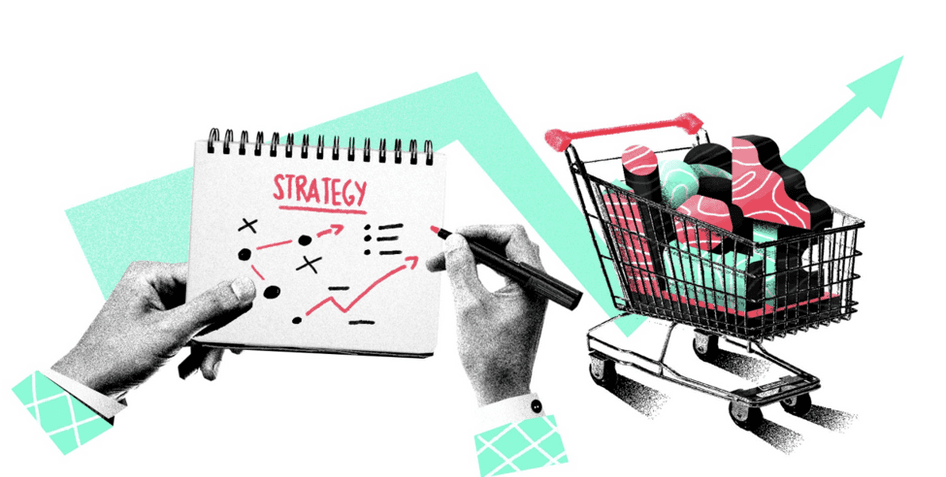
Improve your ecommerce customer journey
Try Hotjar and start learning from your customers today to improve their experience on your ecommerce site.
What is the ecommerce customer journey?
‘Ecommerce customer journey’ describes the stages of a customer’s experience with an online business, from the moment they first become aware of its products to the moment they complete a purchase.
A clear, smooth online experience tends to have a positive impact on your potential customers. For example:
If your website loads quickly and without issues, your product and pricing pages are clear and easy to navigate, and your customer support team is easy to reach, your website visitors might feel comfortable with making a purchase
If your website is slow to load, your product pages are hard to navigate and hide unexpected costs, or there are too many support forms to fill out, your visitors might choose to bounce or exit —which is both an interrupted journey and a missed opportunity
Why is the ecommerce customer journey important?
Your customers develop opinions about your business (and whether or not they want to buy things from you) based on the sum of their interactions with your website. Visualizing these interactions as a ‘journey’ made of separate stages is a convenient way to look at a customer’s experience as a whole, and to understand what they may be looking for and needing at different touchpoints .
Giving thought to the entire customer journey can help you answer important questions, like:
Why did that customer abandon their shopping cart?
Did this person not find what they were looking for?
How can I learn from these customers’ actions on my site?
What changes do I need to make to my ecommerce store to increase conversions?
To find answers, let’s explore what a typical customer journey through your site might look and feel like.
5 stages of the ecommerce customer journey
The concept of ‘customer journey’ is very common in marketing, but your customers themselves may not be aware of—or at least aren’t thinking about—their actions on your website as ‘stages’ in a journey. Rather than thinking about each stage, they’re experiencing it.
You may be familiar with the traditional terms for the stages of the ecommerce customer journey, which are usually something like:
Consideration
Acquisition
But in the spirit of customer centricity , we’re choosing to rename the stages of the customer journey to put ourselves in the customers’ shoes.
Here’s quick a visualization of five stages in the ecommerce customer journey, and what each means for your customers:
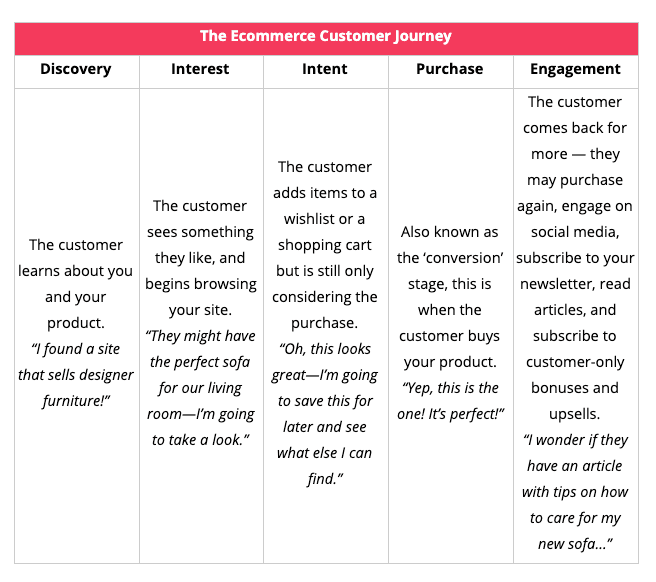
And here’s how each stage relates to your ecommerce business:
Stage 1: discovery
The customer learns about your product (“I found a site that sells designer furniture!”)
At this stage, you can learn where customers are coming from, what brought them to your website, which pages they’re landing on and navigating to, and the path that took them from one page to another. This is an opportunity to learn what new customers need—what they’re looking for on your site.
Stage 2: interest
The customer sees something they like, and they begin browsing your site (“They might have the perfect sofa for our living room—I’m going to take a look.”)
This stage, otherwise known as the consideration stage, might be a good time to figure out how to reduce bounce rates on your main pages and to get prospects to browse more products. This stage presents an opportunity to learn how to help customers find what they’re looking for as they explore your site.
Stage 3: intent
The customer adds items to a wishlist or a shopping cart, but they're still only considering the purchase (“Oh, this looks great—I’m going to save this for later and see what else I can find.”)
Here, you may be able to identify which page features are working to your advantage and what’s getting prospects to add products to their wishlists and shopping carts. This stage is also where a new marketing channel may enter the journey: the email list (which you can use to capture the addresses of people who are interested, but not ready to commit).
Stage 4: purchase
Also known as the ‘conversion’ stage, this is when the customer buys your product (“Yep, this is the one! It’s perfect!”)
This is the moment to start building a long-term relationship with your customers, and identify opportunities to better serve them in the future. This part of the journey is also a great time to run a post-purchase survey and get some quick feedback about what worked (or what didn’t) for people who just finished purchasing from you.
Stage 5: engagement
The customer comes back for more—they may purchase again, engage on social media, subscribe to your newsletter, read articles, and subscribe to customer-only bonuses and upsells (“I wonder if they have an article with tips on how to care for my new sofa…”)
At this point, you want new customers to become engaged and loyal customers. This is a good time to encourage customers to participate on social media , to get email list sign-ups , to promote loyalty programs, and to share helpful resources and articles. This stage presents an opportunity to increase customer retention and brand loyalty—get your customers coming back to browse more products and become an advocate for your brand.
Now that we’ve covered the basics of the customer journey, let’s discuss how you can improve the customer’s experience on your ecommerce site.
5 ways to learn about the ecommerce journey from your customers
A common starting point to understand and improve your customers’ experience on your site is to turn to Google Analytics (GA) data (or another traditional analytics tool). With this tool, you can gain insight on unique pageviews, the average time people spend on each page, bounce rates, exit rates , and even how customers use your site’s ‘search’ bar.
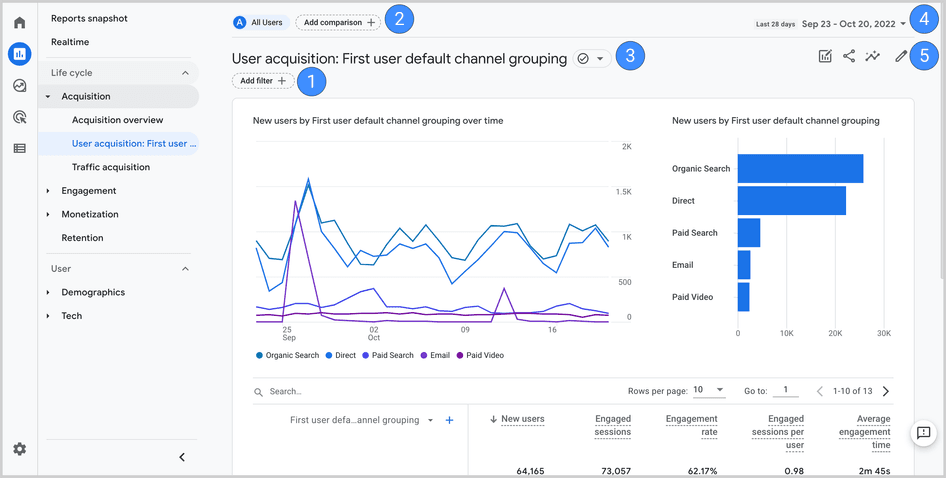
However, there will come a point where metrics from Google Analytics aren’t enough for you to understand exactly what’s going on (or why), which is what Spencer at MADE.COM experienced. He used what he learned from GA to develop ideas about MADE.COM’s user experience (UX) issues—but the quantitative data wasn’t quite specific enough to explain why website visitors were behaving the way they were.
Spencer was also concerned that some of the pain points he hypothesized hadn’t been completely validated with customers, so he turned to tools that would complement the data he was getting from GA. Here’s a breakdown of the strategies he used :
An on-site survey to learn more about the ‘discovery’ stage
Heatmaps to visualize the ‘interest’ and ’intent’ stages
On-page surveys to improve the ‘intent’ and ‘purchase’ stages
Post-purchase surveys to understand the ‘engagement’ stage
And, to give you even more inspiration, we’ve thrown in a bonus strategy to turn to: capturing the bigger picture of the entire customer journey with funnel analysis and session recordings . Let’s take a look at these strategies in more detail.
💡Pro tip: Hotjar's GA integration allows you to connect quantitative and visual data for a more in-depth understanding of customer behavior. While GA shows you what’s happening on your site, we step in to help you understand why those things are happening.
1. Use an on-site survey to learn more about the ‘discovery’ stage
Placing a survey on your main traffic pages (on your homepage, for example) will help you learn more about the discovery or awareness stage of the customer journey, and understand what brought people to your website or to a specific sub-section of it for the first time.
To do this, Spencer placed a survey on the ‘showroom’ section of MADE.COMand asked the straightforward question, “How did you hear about this showroom?” to understand how visitors got there.
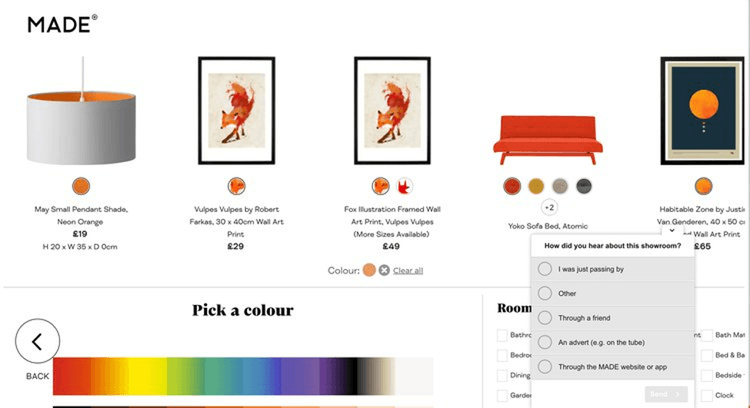
If this was your ecom website: a survey like this one would help you get a better sense of which channel(s) or search engines your visitors found you from. Remember that Google Analytics will report on the difference between paid or organic traffic demographics, but it won’t be able to account for sources such as word of mouth, friend referrals, or physical advertising. This is important information to consider, especially if survey results indicate that you should switch up your ecommerce marketing strategy and try catering to different target audiences.
💡Pro tip: on-page surveys can be used to learn even more about your customers’ discovery stage, beyond just how and where they came from. For example, you can place one on your main landing pages and collect extra details by asking:
What did you come here to do today?
What are you looking for today?
Who are you shopping for today?
Using survey tools like Hotjar Surveys will give you real-time feedback that can help you minimize things like customer churn and cart abandonment before they even happen.
Easily build an on-site survey and start collecting customer feedback in minutes with Hotjar
2. Use heatmaps to visualize the ‘interest’ and ’intent’ stages
When MADE.COM launched a new site design with updated navigation options, Spencer used heatmaps to see how people were interacting with them and behaving as a result.
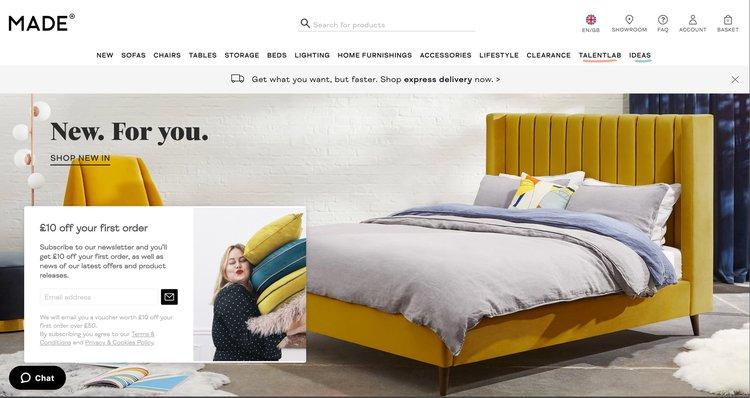
With heatmaps, Spencer could see where people hovered over and clicked on the updated navigation options, and compared visitors’ interactions on the new and old versions of the page. This tool helped him illustrate how MADE.COM’s new navigation options were an improvement to the site: the recorded clicks proved that visitors were paying a lot more attention to navigation, which in turn led them to browse the site in new ways—and that’s particularly crucial in the interest stage, where people may be browsing or looking for inspiration.
The heatmap below is not the actual one Spencer used, but it still works in the same way—you can see how far people make it down the page and understand their movements on it:
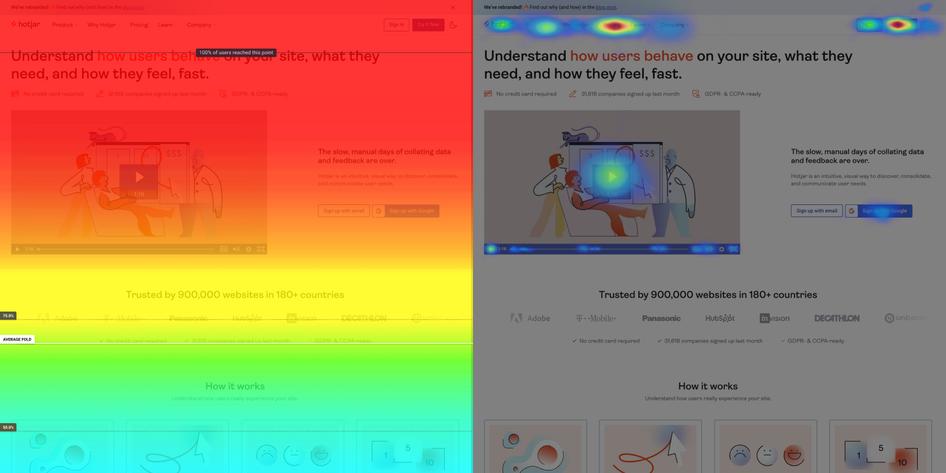
If this was your ecom website : you could use heatmaps before and after a website redesign to evaluate if the changes you make to structure and layout influence customer behavior. You can also use heatmaps on critical ecommerce pages (such as product or basket pages), especially when you want to reduce bounce rates and get more people to convert. Heatmaps help you answer questions such as:
Are prospective customers clicking on key page elements (links, buttons, and CTAs)?
Are they seeing all the important information?
Are they experiencing issues across devices?
If you’re not quite sure how to find the answers to these questions, read more about how to analyze heatmaps and what the conclusions you draw might mean for your next website optimization .
💡Pro tip: Hotjar Heatmaps allows you to visualize click, move, and scroll data in one streamlined view: Engagement Zones .

Combine multiple heatmaps with Hotjar’s Engagement Zones map
3. Use on-page surveys to improve the ‘intent’ and ‘purchase’ stages
On-page surveys are not just for the discovery stage: you can use them throughout the customer journey to get constant feedback on how to improve the experience.
For example, Spencer wanted to identify specific journey pain points that were identified by customers themselves. This can be done quickly with an open-ended survey question such as “What’s missing on this page?” or “What’s the one thing we should change on this page?”
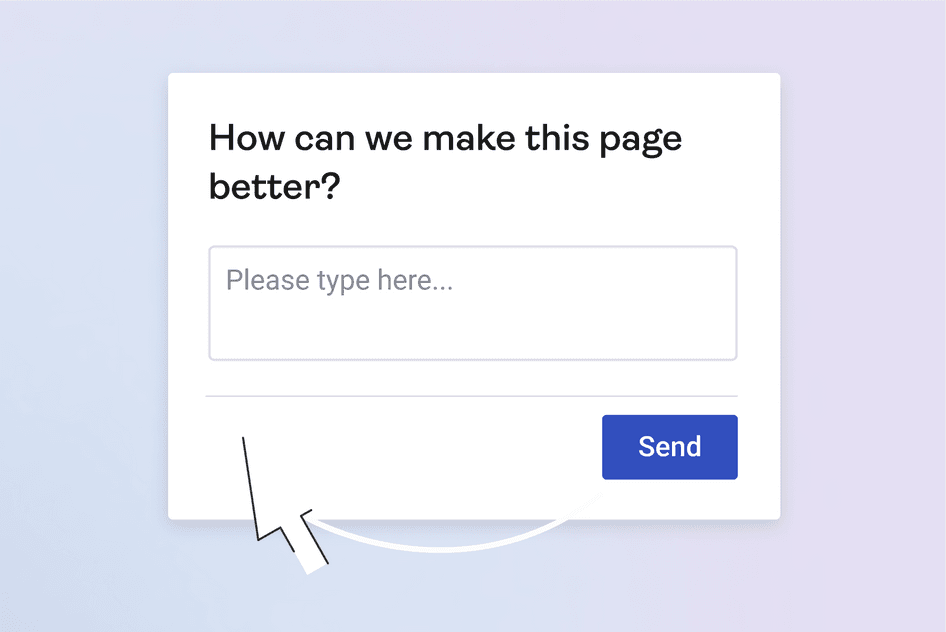
Using this method, Spencer learned about features that were missing from the site. Above all things, MADE.COM’s customers wanted wishlist capabilities and a more streamlined, customized process for matching fabric samples with the products they were interested in.
If this was your ecom website : you could place an on-page survey to investigate elements specific to the interest and purchase stages, and ask your prospective customers questions throughout the checkout process, such as:
What information is missing or would make your decision to buy easier?
What’s your biggest fear or concern about purchasing this item?
Are you able to complete the purpose of your visit today?
If you’re not making a purchase today, what’s stopping you?
💡Pro tip: when surveying customers to improve their experience, it’s important to ask the right questions so you get the right answers—namely, the answers with the level of detail you need to take action. Once you have specific answers to your questions, you can apply what you’ve learned to your ecommerce customer journey and identify which stages are most affected by each UX issue.
For example:
Don’t just ask : What do you think about our online store?
Ask : What’s one change that we could make to improve your shopping experience?
Don’t just ask : Does this page have everything you need, Yes/No?
Ask : What would you like to see added to the page?
Don’t just ask : Is our website easy to use, Yes/No?
Ask : Were you able to find what you were looking for today?
If you find yourself stuck coming up with engaging questions, get inspired by Hotjar’s customizable survey templates or try Hotjar's new AI-powered surveys assistant .
4. Use post-purchase surveys to understand the ‘engagement’ stage
Your customers’ journey doesn’t have to end when they buy something—ideally, you want them to come back and become repeat customers. Sending a post-purchase survey via email and asking new customers for feedback is a great way to learn about what almost stopped them from converting and what might stop them from returning again.
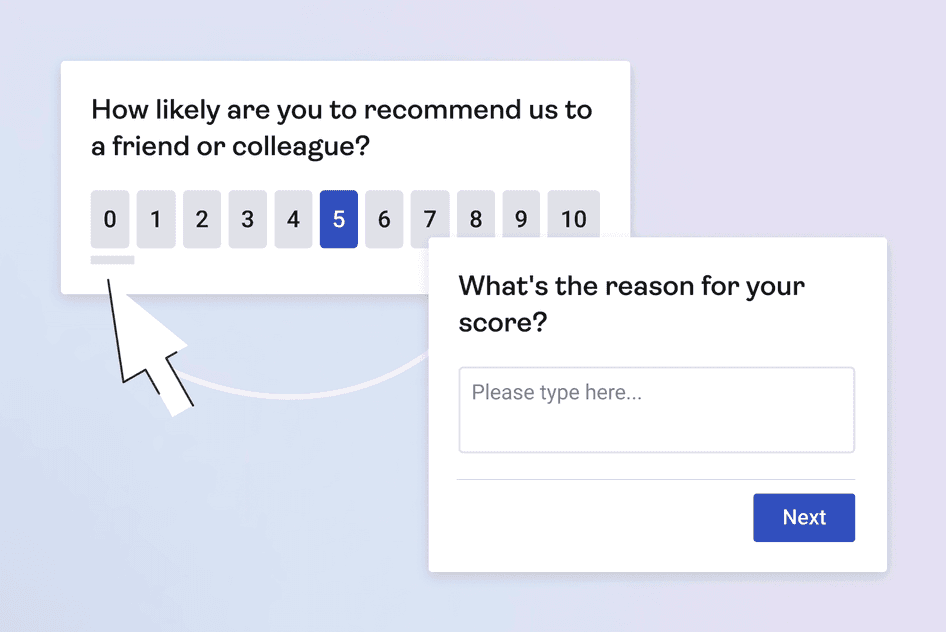
Assess customer loyalty with post-purchase surveys like the Net Promoter Score ®
At MADE.COM, Spencer was able to confirm that customers were interested in financing options. He asked direct questions about financing to learn what was most important to the customer, which options they wanted to see, and if they had a vendor preference. This turned out to be useful information for both the purchase and engagement stages, as it helped Spencer paint a clearer picture of an additional need that prospective and existing customers had when considering a first or repeat purchase.
If this was your ecom website: you could email a survey to your customers, or—if you want to go faster—simply set one to appear on your thank-you page after a customer’s order is confirmed. Use it to ask customer satisfaction questions such as:
How would you rate your overall experience?
What can we do to improve the experience?
What almost stopped you from completing your purchase?
💡Pro tip: worried about the number of customers that exit your site before making a purchase? Understand why your customers are leaving (and not converting) with Hotjar’s exit-intent survey template .
5. Understand the entire customer journey with funnel analysis and session recordings
In addition to the stage-based strategies Spencer implemented when optimizing the customer journey at MADE.COM, it can be extremely useful to zoom out and take a look at the whole buyer’s journey holistically. This is where two tools— funnel analysis and session recordings —come in.
Funnel analysis
The term ‘funnel’ describes the path ecommerce site visitors take and how it inevitably narrows as some people decide to leave the site or become a customer at the end of their journey.
With ‘funnel analysis’, you trace the customer journey through specific steps (or web pages) that, hopefully, result in conversions or signups, so you can optimize the process by analyzing how many visitors end up in each stage. Knowing when your potential customers drop off at each stage is imperative for increasing your site’s lifetime value and conversion rates.
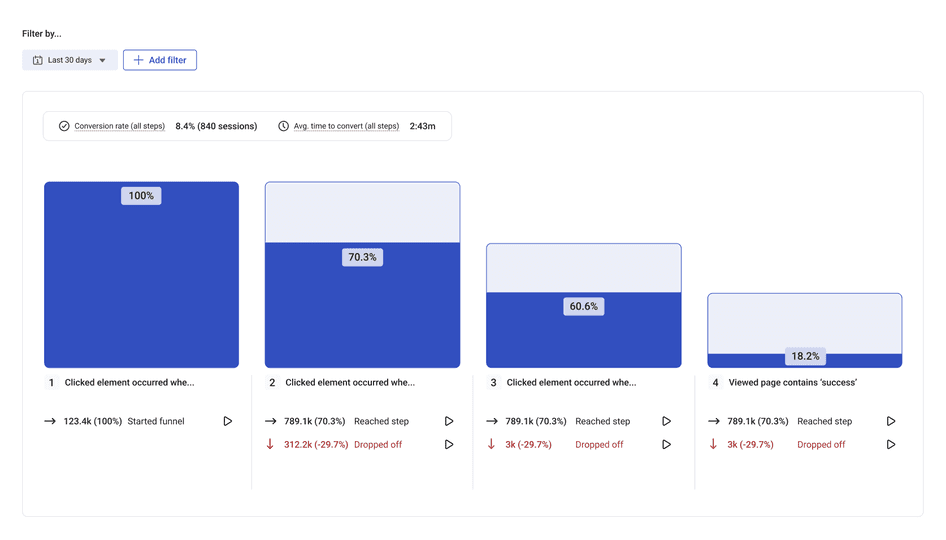
Session recordings
Using funnel analysis in tandem with a second tool—session recordings—will reveal your customers’ behaviors in high-definition. Are you left wondering why a lot of customers exit from a certain page in your funnel? Find out what might be missing from their online shopping experience by watching how customers behave throughout their entire journey.
Session recordings allow you to capture not only how visitors navigate through your site, they can help you uncover website usability issues that prevent visitors from making a purchase.
💡Pro tip: Hotjar integrates Recordings directly with Funnels , so you can identify pain points in your most important flows by watching recordings of potential customers who didn’t convert and make it to the next step.
Hotjar Funnels and Recordings can help identify what customer touchpoints throughout the journey affect your conversion rates
Focus on your customers
A final thing to remember: when it comes down to it, your ecommerce website is for your customers. By learning more about customers’ needs and behaviors through the five methods we just discussed, you’ll be five steps closer to giving them the clearest, smoothest path on their ecommerce journey.
📚 More reading: learn how to improve the user experience and increase revenue with these user-driven tools and methods for running ecommerce website analysis .
Related articles

PX insights
8 ways to improve feature adoption in mid-market companies (with strategies and metrics for success)
Each new feature has an overarching goal: to enhance the value that customers get from your product. However, if you can’t show them the benefits and get them to adopt a feature, that value goes to waste.

Shadz Loresco
8 ways to improve feature adoption (with strategies and metrics for success)

8 product analytics tools every product team should know about (and why)
If you want to create a product that gives customers exactly what they need, relying on gut feel and guesswork isn’t enough. Successful product teams need to understand their users, empathize with them, and use data-driven insights to build—and optimize—their products.
Hotjar team
The customer journey — definition, stages, and benefits

Businesses need to understand their customers to increase engagement, sales, and retention. But building an understanding with your customers isn’t easy.
The customer journey is the road a person takes to convert, but this journey isn’t always obvious to business owners. Understanding every step of that journey is key to business success. After reading this article, you’ll understand the customer journey better and how to use it to improve the customer experience while achieving your business goals.
This post will discuss:
- What a customer journey is
Customer journey stages
Benefits of knowing the customer journey.
- What a customer journey map is
How to create a customer journey map
Use the customer journey map to optimize the customer experience, what is a customer journey.
The customer journey is a series of steps — starting with brand awareness before a person is even a customer — that leads to a purchase and eventual customer loyalty. Businesses use the customer journey to better understand their customers’ experience, with the goal of optimizing that experience at every touchpoint.
Giving customers a positive customer experience is important for getting customers to trust a business, so optimizing the customer journey has never mattered more. By mastering the customer journey, you can design customer experiences that will lead to better customer relationships, loyalty, and long-term retention .
Customer journey vs. the buyer journey
The stages of the customer’s journey are different from the stages of the buyer’s journey. The buyer’s journey follows the customer experience from initial awareness of a brand to buying a product. The customer journey extends beyond the purchase and follows how customers interact with your product and how they share it with others.
Every lead goes through several stages to become a loyal customer. The better this experience is for customers at each stage, the more likely your leads are to stick around.
Ensure that your marketing, sales, and customer service teams optimize for these five stages of the customer journey:

1. Awareness
In the awareness phase, your target audience is just becoming aware of your brand and products. They need information or a solution to a problem, so they search for that information via social media and search engines.
For example, if someone searches on Google for pens for left-handed people, their customer journey begins when they’re first aware of your brand’s left-handed pen.
At this stage, potential customers learn about your business via web content, social media, influencers, and even their friends and family. However, this isn’t the time for hard sells. Customers are simply gathering information at this stage, so you should focus first on answering their questions and building trust.
2. Consideration
In the consideration phase, customers begin to consider your brand as a solution to their problem. They’re comparing your products to other businesses and alternative solutions, so you need to give these shoppers a reason to stick around.
Consideration-stage customers want to see product features that lean heavily toward solving problems and content that doesn’t necessarily push a sale. At this stage, businesses need to position their solution as a better alternative. For example, a nutrition coaching app might create content explaining the differences between using the app and working with an in-person nutritionist — while subtly promoting the benefits of choosing the app.
3. Purchase
The purchase stage is also called the decision stage because at this stage customers are ready to make a buying decision. Keep in mind that their decision might be to go with a competing solution, so purchase-stage buyers won’t always convert to your brand.
As a business, it’s your job to persuade shoppers at this stage to buy from you. Provide information on pricing, share comparison guides to showcase why you’re the superior option, and set up abandoned cart email sequences.
4. Retention
The customer journey doesn’t end once a shopper makes their first purchase. Once you’ve converted a customer, you need to focus on keeping them around and driving repeat business. Sourcing new customers is often more expensive than retaining existing clients, so this strategy can help you cut down on marketing costs and increase profits.
The key to the retention stage is to maintain positive, engaging relationships between your brand and its customers. Try strategies like regular email outreach, coupons and sales, or exclusive communities to encourage customer loyalty.
5. Advocacy
In the advocacy stage, customers are so delighted with your products and services that they spread the word to their friends and family. This goes a step beyond retention because the customer is actively encouraging other people to make purchases.
Customer journeys don’t have a distinct end because brands should always aim to please even their most loyal customers. In the advocacy stage of the customer journey, you can offer referral bonuses, loyalty programs, and special deals for your most active customers to encourage further advocacy.
Being aware of the customer journey helps shed more light on your target audience’s expectations and needs. In fact, 80% of companies compete primarily on customer experience. This means optimizing the customer journey will not only encourage your current customers to remain loyal but will also make you more competitive in acquiring new business.
More specifically, acknowledging the customer journey can help you:

- Understand customer behavior. Classifying every action your customers take will help you figure out why they do what they do. When you understand a shopper’s “why,” you’re better positioned to support their needs.
- Identify touchpoints to reach the customer. Many businesses invest in multichannel marketing, but not all of these touchpoints are valuable. By focusing on the customer journey, you’ll learn which of these channels are the most effective for generating sales. This helps businesses save time and money by focusing on only the most effective channels.
- Analyze the stumbling blocks in products or services. If leads frequently bail before buying, that could be a sign that something is wrong with your product or buying experience. Being conscious of the customer journey can help you fix issues with your products or services before they become a more expensive problem.
- Support your marketing efforts. Marketing requires a deep familiarity with your target audience. Documenting the customer journey makes it easier for your marketing team to meet shoppers’ expectations and solve their pain points.
- Increase customer engagement. Seeing the customer journey helps your business target the most relevant audience for your product or service. Plus, it improves the customer experience and increases engagement. In fact, 29.6% of customers will refuse to embrace branded digital channels if they have a poor experience, so increasing positive customer touchpoints has never been more important.
- Achieve more conversions. Mapping your customers’ journey can help you increase conversions by tailoring and personalizing your approach and messages to give your audience exactly what they want.
- Generate more ROI. You need to see a tangible return on your marketing efforts. Fortunately, investing in the customer journey improves ROI across the board. For example, brands with a good customer experience can increase revenue by 2–7% .
- Improve customer satisfaction and loyalty. Today, 94% of customers say a positive experience motivates them to make future purchases. Optimizing the customer journey helps you meet shopper expectations, which increases satisfaction and loyalty.

What is a customer journey map?
A customer journey map is a visual representation of every step your customer takes from being a lead to eventually becoming an advocate for your brand. The goal of customer journey mapping is to simplify the complex process of how customers interact with your brand at every stage of their journey.
Businesses shouldn’t use a rigid, one-size-fits-all customer journey map. Instead, they should plan flexible, individual types of customer journeys — whether they’re based on a certain demographic or on individual customer personas. To design the most effective customer journey map, your brand needs to understand a customer’s:
- Actions. Learn which actions your customer takes at every stage. Look for common patterns. For example, you might see that consideration-stage shoppers commonly look for reviews.
- Motivations. Customer intent matters. A person’s motivations change at every stage of the customer journey, and your map needs to account for that. Include visual representation of the shopper’s motivations at each stage. At the awareness stage, their motivation might be to gather information to solve their problem. At the purchase stage, it might be to get the lowest price possible.
- Questions. Brands can take customers’ common questions at every stage of the customer journey and reverse-engineer them into useful content. For example, shoppers at the consideration stage might ask, “What’s the difference between a DIY car wash and hiring a professional detailer?” You can offer content that answers their question while subtly promoting your car detailing business.
- Pain points. Everybody has a problem that they’re trying to solve, whether by just gathering intel or by purchasing products. Recognizing your leads’ pain points will help you craft proactive, helpful marketing campaigns that solve their biggest problems.

Customer journey touchpoints
Every stage of the customer journey should also include touchpoints. Customer touchpoints are the series of interactions with your brand — such as an ad on Facebook, an email, or a website chatbot — that occur at the various stages of the customer journey across multiple channels. A customer’s actions, motivations, questions, and pain points will differ at each stage and at each touchpoint.
For example, a customer searching for a fishing rod and reading posts about how they’re made will have very different motivations and questions from when later comparing specs and trying to stay within budget. Likewise, that same customer will have different pain points when calling customer service after buying a particular rod.

It might sound like more work, but mapping the entire customer journey helps businesses create a better customer experience throughout the entire lifecycle of a customer’s interaction with your brand.
Before jumping into the steps of how to create the customer journey map, first be clear that your customer journey map needs to illustrate the following:
- Customer journey stages. Ensure that your customer journey map includes every stage of the customer journey. Don’t just focus on the stages approaching the purchase — focus on the retention and advocacy stages as well.
- Touchpoints. Log the most common touchpoints customers have at every stage. For example, awareness-stage touchpoints might include your blog, social media, or search engines. Consideration-stage touchpoints could include reviews or demo videos on YouTube. You don’t need to list all potential touchpoints. Only list the most common or relevant touchpoints at each stage.
- The full customer experience. Customers’ actions, motivations, questions, and pain points will change at every stage — and every touchpoint — during the customer journey. Ensure your customer journey map touches on the full experience for each touchpoint.
- Your brand’s solutions. Finally, the customer journey map needs to include a branded solution for each stage and touchpoint. This doesn’t necessarily mean paid products. For example, awareness-stage buyers aren’t ready to make a purchase, so your brand’s solution at this stage might be a piece of gated content. With these necessary elements in mind, creating an effective customer journey map is a simple three-step process.
1. Create buyer personas
A buyer persona is a fictitious representation of your target audience. It’s a helpful internal tool that businesses use to better understand their audience’s background, assumptions, pain points, and needs. Each persona differs in terms of actions, motivations, questions, and pain points, which is why businesses need to create buyer personas before they map the customer journey.
To create a buyer persona, you will need to:
- Gather and analyze customer data. Collect information on your customers through analytics, surveys, and market research.
- Segment customers into specific buying groups. Categorize customers into buying groups based on shared characteristics — such as demographics or location. This will give you multiple customer segments to choose from.
- Build the personas. Select the segment you want to target and build a persona for that segment. At a minimum, the buyer persona needs to define the customers’ basic traits, such as their personal background, as well as their motivations and pain points.

For example, ClearVoice created a buyer persona called “John The Marketing Manager.” The in-depth persona details the target customer’s pain points, pet peeves, and potential reactions to help ClearVoice marketers create more customer-focused experiences.
2. List the touchpoints at each customer journey stage
Now that you’ve created your buyer personas, you need to sketch out each of the five stages of the customer journey and then list all of the potential touchpoints each buyer persona has with your brand at every one of these five stages. This includes listing the most common marketing channels where customers can interact with you. Remember, touchpoints differ by stage, so it’s critical to list which touchpoints happen at every stage so you can optimize your approach for every buyer persona.
Every customer’s experience is different, but these touchpoints most commonly line up with each stage of the customer journey:
- Awareness. Advertising, social media, company blog, referrals from friends and family, how-to videos, streaming ads, and brand activation events.
- Consideration. Email, sales calls, SMS, landing pages, and reviews.
- Purchase. Live chat, chatbots, cart abandonment emails, retargeting ads, and product print inserts.
- Retention. Thank you emails, product walkthroughs, sales follow-ups, and online communities.
- Advocacy. Surveys, loyalty programs, and in-person events.
Leave no stone unturned. Logging the most relevant touchpoints at each stage eliminates blind spots and ensures your brand is there for its customers, wherever they choose to connect with you.
3. Map the customer experience at each touchpoint
Now that you’ve defined each touchpoint at every stage of the customer journey, it’s time to detail the exact experience you need to create for each touchpoint. Every touchpoint needs to consider the customer’s:
- Actions. Describe how the customer got to this touchpoint and what they’re going to do now that they’re here.
- Motivations. Specify how the customer feels at this moment. Are they frustrated, confused, curious, or excited? Explain why they feel this way.
- Questions. Every customer has questions. Anticipate the questions someone at this stage and touchpoint would have — and how your brand can answer those questions.
- Pain points. Define the problem the customer has — and how you can solve that problem at this stage. For example, imagine you sell women’s dress shoes. You’re focusing on the buyer persona of a 36-year-old Canadian woman who works in human resources. Her touchpoints might include clicking on your Facebook ad, exploring your online shop, but then abandoning her cart. After receiving a coupon from you, she finally buys. Later, she decides to exchange the shoes for a different color. After the exchange, she leaves a review. Note how she acts at each of these touchpoints and detail her likely pain points, motivations, and questions, for each scenario. Note on the map where you intend to respond to the customer’s motivations and pain points with your brand’s solutions. If you can create custom-tailored solutions for every stage of the funnel, that’s even better.
A positive customer experience is the direct result of offering customers personalized, relevant, or meaningful content and other brand interactions. By mapping your customers’ motivations and pain points with your brand’s solutions, you’ll find opportunities to improve the customer experience. When you truly address their deepest needs, you’ll increase engagement and generate more positive reviews.
Follow these strategies to improve the customer experience with your customer journey map:
- Prioritize objectives. Identify the stages of the customer journey where your brand has the strongest presence and take advantage of those points. For example, if leads at the consideration stage frequently subscribe to your YouTube channel, that gives you more opportunities to connect with loyal followers.
- Use an omnichannel approach to engage customers. Omnichannel marketing allows businesses to gather information and create a more holistic view of the customer journey. This allows you to personalize the customer experience on another level entirely. Use an omnichannel analytics solution that allows you to capture and analyze the true cross-channel experience.
- Personalize interactions at every stage. The goal of mapping the customer journey is to create more personalized, helpful experiences for your audience at every stage and touchpoint. For example, with the right data you can personalize the retail shopping experience and customer’s website experience.
- Cultivate a mutually trusting relationship. When consumer trust is low, brands have to work even harder to earn their customers’ trust. Back up your marketing promises with good customer service, personalized incentives, and loyalty programs.
Getting started with customer journeys
Customer journeys are complicated in an omnichannel environment, but mapping these journeys can help businesses better understand their customers. Customer journey maps help you deliver the exact experience your customers expect from your business while increasing engagement and sales.
When you’re ready to get started, trace the interactions your customers have at each stage of their journey with your brand. Adobe Customer Journey Analytics — a service built on Adobe Experience Platform — can break down, filter, and query years’ worth of data and combine it from every channel into a single interface. Real-time, omnichannel analysis and visualization let companies make better decisions with a holistic view of their business and the context behind every customer action.
Learn more about Customer Journey Analytics by watching the overview video .
https://business.adobe.com/blog/perspectives/introducing-adobes-customer-journey-maturity-model
https://business.adobe.com/blog/how-to/create-customer-journey-maps
https://business.adobe.com/blog/basics/what-is-customer-journey-map

- Case studies
- Expert advice
Retail customer journey: Definition, stages, examples, templates
Imagine walking into a store looking for a specific gadget. You're ready to buy, but you can't find it anywhere. You seek help, yet the staff seems disorganized and uninterested, unable to tell you whether it’s even in stock. Frustrated, you leave empty-handed, promising never to return. Unfortunately, scenarios like this are all too common, but it doesn't have to be this way.
By crafting a detailed retail customer journey map, businesses can transform a chaotic shopping experience into a smooth, enjoyable journey from start to finish. This powerful tool helps retailers understand every step a customer takes, from initial interest to post-purchase, allowing for strategic enhancements that elevate the shopping experience.
In this article, we delve into the definition of a retail customer journey, explore its various stages, and offer practical examples and templates to guide you in building your own effective journey map.
Let’s start.
- 1 What is a retail customer journey?
- 2.1 Initial engagement
- 2.2 Awareness
- 2.3 Research
- 2.4 Consideration
- 2.5 Validation
- 2.6 Purchase
- 2.7 Post-purchase support
- 2.8 Usage
- 2.9 Advocacy
- 3 Loyalty and second purchase
- 4 Why is building a retail customer journey map important?
- 5.1 1. Define your objectives
- 5.2 2. Gather data
- 5.3 3. Segment your customer base into personas
- 5.4 4. Identify key interactions & channels
- 5.5 5. Map the customer journey
- 5.6 6. Identify emotions and pain points
- 5.7 7. Determine opportunities for improvement
- 5.8 8. Create & prioritize actionable strategies
- 5.9 9. Test and refine
- 5.10 10. Share and educate
- 6 An example of retail customer journey maps
What is a retail customer journey?

The retail customer journey encompasses the complete experience a customer goes through when interacting with a retail brand or business, from initial awareness all the way to post-purchase activities and beyond. Such a journey covers each step a customer takes as they discover, evaluate, purchase, and interact with a retailer’s products and services.
It's easier to understand the retail customer journey through examples. Let's explore three different experiences, all related to retail.
- Maria’s experience: Buying a coffee machine
Maria has always been a coffee lover and often finds herself spending a lot of time at coffee shops. One day, while browsing her favorite lifestyle blog, she read an article about the benefits of brewing coffee at home. Intrigued, Maria visited a popular online retail site to look at coffee machines.
She found a highly-rated model that wasn't just efficient but also aesthetically pleasing. After reading through customer reviews on the website and checking a few video tutorials on its maintenance, she decided to purchase it. A week after using the coffee machine, she received an email from the retailer suggesting complementary products like specialty coffee grounds and descaling solutions, which she gladly purchased. This smooth and informative journey, from recognizing a need to fulfilling it with helpful follow-ups, made Maria a happy customer.
- Tom’s adventure: New running shoes
Tom decided to take up running to improve his fitness. His old sneakers weren’t suitable for running long distances, so he went to a local sports store to explore his options. At the store, a friendly salesperson helped him choose a pair of shoes that would be good for beginners and fit his wide feet comfortably.
The salesperson also suggested a popular running app to track his progress and a local running club to meet fellow enthusiasts. This personalized in-store experience helped Tom find the right shoes and introduced him to resources that could support his new hobby.
- Aisha’s upgrade: Enhancing a smartphone
Aisha had been using her smartphone for over three years, and it was time for an upgrade. Her mobile carrier notified her about an exclusive offer for loyal customers to pre-order the latest smartphone model with a significant discount.
Aisha visited the carrier’s store to explore the new model and was impressed by its advanced features during a hands-on demo by the store staff. She pre-ordered the phone, and when it was released, she received it with a personalized thank-you note and a complimentary phone case as a token of appreciation for her loyalty. This proactive and considerate approach made Aisha feel valued and reinforced her decision to stay with her mobile carrier.
Now, let's zoom in and break down the retail customer journey into stages.
Key stages of the retail customer journey
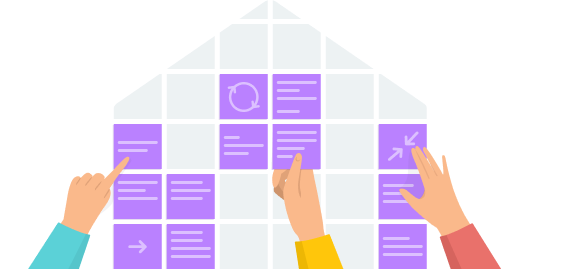
To capture the nuances of modern retail interactions, it’s beneficial to expand and detail additional stages within the retail customer journey. The number of stages in a journey can vary, depending on your specific case and objectives. However, there are common stages that are crucial, and we'll cover them sometimes using Aisha’s example.
Initial engagement
Before awareness, initial engagement can spark interest. This might involve passive interactions such as seeing a friend wear a product, noticing an ad on social media, or simply passing by the store and being drawn in by its design or a display window. Capturing these moments with retail customer journey mapping can help identify what first pulls customers towards your brand.
For instance, Aisha's journey to upgrading her smartphone started subtly. She first noticed a friend's new phone, admired its design and performance, and then saw an engaging ad on social media from her carrier. A later glance at a store display featuring the phone cemented her interest, leading her from casual observer to potential upgrader.
This stage is where potential customers become actively aware of your brand. It could be through targeted advertising, social media presence, or content marketing. Understanding what messages resonate best will refine your strategies for capturing attention effectively. Aisha became actively aware of the new smartphone through a targeted notification from her mobile carrier, an offer tailored specifically for loyal customers. This direct approach, coupled with engaging content on the carrier's social media pages highlighting the phone's advanced features and user testimonials, solidified her interest, making Aisha feel informed and valued.
Following awareness, customers often engage in research to compare your offerings with competitors’. This stage involves more in-depth interactions with your content, visiting your website, reading reviews, and possibly engaging with customer service. Detailed retail customer journey mapping here focuses on making information accessible and easy to navigate.
Following her initial interest, Aisha compared the new smartphone's features and pricing on her carrier's website, read customer reviews, and watched product demos. A visit to the carrier's store provided hands-on experience and direct answers from the staff, giving the information to make an informed decision.
Consideration
Now seriously considering purchase, customers evaluate their options based on price, features, and benefits. Retailers can enhance the customer journey in a retail store by providing clear and concise product information, comparison tools, and well-trained staff to assist in decision-making. Now, seriously considering her options, Aisha is making her own decision.
Before making a final decision, customers often seek validation of their choice through social proof such as reviews, testimonials, or asking friends and family. Ensuring that positive feedback is visible and easily accessible is crucial in retail customer journey mapping. Before making her final decision, Aisha sought validation by reviewing user testimonials and discussing the upgrade with friends and family.
It is the actual transaction stage where the decision is acted upon. Simplifying the purchase process, ensuring multiple payment options, and providing security assurance can greatly enhance the customer experience. At the purchase stage, Aisha acted on her decision to upgrade her smartphone.
She quickly streamlined the process at the carrier's store and pre-ordered the new model. Multiple payment options were available, and the transaction was secure, enhancing her overall experience and ensuring a smooth, hassle-free purchase.
Post-purchase support
Support immediately after purchase is crucial to customer satisfaction. This might include customer service, easy access to warranties, and user guides. Retail customer journey mapping should ensure seamless support to foster positive experiences.
After her purchase, Aisha received excellent post-purchase support, which was crucial to her satisfaction. The carrier provided her with a comprehensive user guide and easy access to warranty information through their website. Additionally, customer service was readily available, offering quick responses to her inquiries and assistance in setting up her new smartphone. This seamless support ensured a positive experience, reinforcing her loyalty to the carrier.
Usage
As customers use the product, their experiences will influence their perceptions of the brand. Providing ongoing support and tips on getting the most out of the product can add value.
As Aisha began using her new smartphone, her experiences significantly influenced her perception of the brand. The carrier ensured she had access to ongoing support, including helpful tips and troubleshooting advice through their app and website. Periodic updates and recommendations on optimizing her smartphone usage also added value, enhancing her overall satisfaction and engagement with the product.
If customers are satisfied with their purchase, they may become brand advocates. Encouraging this through incentives for sharing their experiences on social media or with friends can transform happy customers into active promoters.
The carrier incentivized Aisha to share her positive experiences by offering discounts for future purchases and referral benefits . These incentives motivated her to promote the brand actively, helping to expand its reach through her trusted personal network.
Loyalty and second purchase
The final stages involve cultivating the relationship to build long-term loyalty. Here, the carrier focused on nurturing a long-term relationship with Aisha to foster loyalty. They engaged her with personalized offers, part of a loyalty program tailored to reward continued patronage. Regular communication via newsletters and exclusive updates ensured she stayed connected and felt valued. This strategic engagement solidified her loyalty and set the stage for future repurchases.
Why is building a retail customer journey map important?
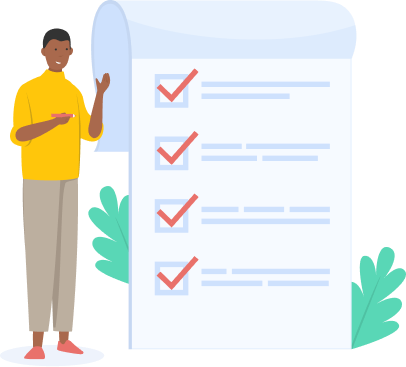
A retail customer journey map is essential for any retail business focused on optimizing the customer experience and improving overall business performance. It provides a detailed visual representation of the customer's experience from initial contact through various touchpoints and, ultimately, to post-purchase interactions.
Here’s why building a retail customer experience map and leveraging this tool in your organization is so important:
- Provides deep customer insights. A customer journey map allows retailers to step into their customers' shoes and view their business from the customers’ perspective. It highlights what customers think, feel, and do at each stage of their shopping journey. This insight is crucial for understanding pain points, bottlenecks, and opportunities within the customer experience. By understanding the customer's needs and behaviors at each step, retailers can tailor services and marketing strategies to better meet those needs.
- Enhances customer experience. With a clear view of the customer’s journey, retailers can identify key moments that matter most to customers and focus on improving these critical interactions. For instance, if the journey map shows that customers feel frustrated during checkout, retailers can streamline this step to make it faster and more user-friendly. Improving these key touchpoints enhances the overall customer experience, increasing satisfaction and loyalty.
- Drives personalization. Retail customer journey mapping allows for identifying specific customer segments and their unique paths and preferences. This detailed understanding enables retailers to craft personalized marketing messages, recommend products, and create promotions that resonate with different segments. When done correctly, personalization significantly boosts the effectiveness of marketing efforts, increasing engagement and conversion rates.
- Supports omnichannel consistency. Today’s customers often engage with retailers across multiple channels—online, in-store, via mobile apps, and social media. A comprehensive customer journey map includes all these channels, ensuring the customer experience is consistent and seamless across all touchpoints. This consistency is critical to building customer trust and satisfaction, as they feel confident that they will receive the same level of service regardless of how they interact with the retailer.
- Facilitates data-driven decisions. By mapping the customer journey, retailers can align their strategic decisions with concrete data about customer interactions and satisfaction levels at each stage of the journey. This approach ensures business decisions are grounded in real customer needs and behaviors rather than assumptions. It allows retailers to allocate resources more effectively, invest in areas that will yield the highest return on customer satisfaction, and only spend on areas that significantly impact the customer experience.
- Improves customer retention. By continuously monitoring and optimizing the customer journey, retailers can better retain their customers. A smooth, enjoyable shopping experience increases the likelihood of repeat purchases and turns one-time buyers into loyal customers. Furthermore, by addressing any negative experiences promptly and effectively, retailers can prevent churn and build a strong, loyal customer base.
- Enhances competitive advantage. In a retail environment where many products and prices are similar, the customer experience often becomes the key differentiator. Retailers who excel in creating positive, memorable customer journeys set themselves apart from competitors. This competitive advantage is crucial in attracting and retaining customers in a crowded market.
- Fosters empathy. By visualizing the customer journey, retailers gain a deeper understanding of customers' emotional landscape as they interact with various touchpoints. This empathetic insight allows retailers to more effectively address customer emotions and needs at each stage of their experience. Empathy in business helps resolve conflicts or issues more compassionately and design services and interactions that genuinely resonate with customers, further enhancing their overall experience and satisfaction.
So, a retail consumer journey map is not just a tool for visualizing customer interactions; it's a strategic asset that drives better customer understanding, enhances personalized marketing, ensures consistency across channels, and supports data-driven decisions. These improvements lead to a superior customer experience, higher customer retention, and, ultimately, a stronger competitive position in the market.
How to create a retail customer journey map
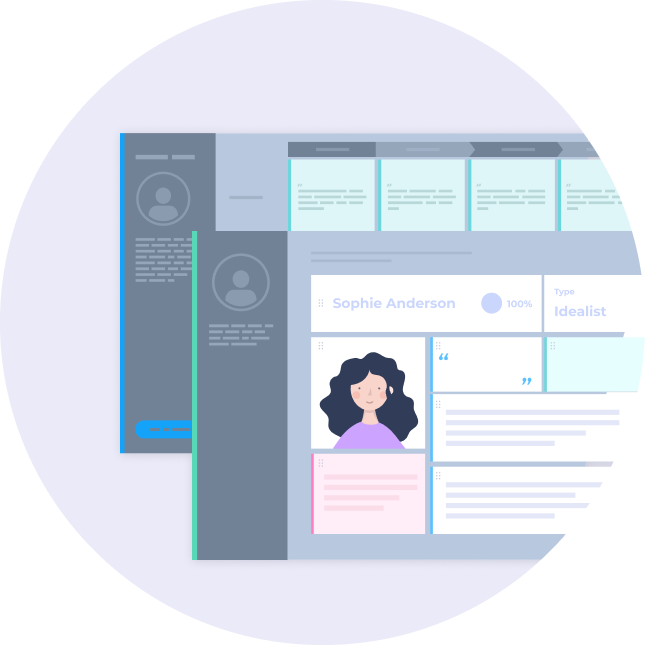
Creating a retail customer journey map is a strategic process that helps businesses visualize their customers' path from initial contact through various interactions to final purchase and potentially beyond. Here’s a detailed, step-by-step guide to building an effective map:
1. Define your objectives
Start by clarifying what you hope to achieve with your customer journey map. Are you trying to improve customer satisfaction, increase sales, reduce friction points, or enhance customer loyalty? Your objectives will guide the level of detail and the aspects of the customer experience you choose to analyze.
2. Gather data
Collect data about your customers and their interactions with your business. This process can include:
- Market research to understand customer demographics, preferences, and behaviors.
- Getting customer feedback through surveys, interviews, and reviews.
- Pulling analytical data from your website, social media, and sales platforms to track how customers navigate your retail environment.
- Using sales data to identify buying patterns, popular products, and potential bottlenecks in the purchasing process. This information helps map the steps a customer takes to make a purchase decision.
- Leveraging in-store analytics to track customer movement, in-store behavior, and product interaction. Technologies like heat maps or RFID can provide valuable data on how customers navigate your space.
- Gathering data from loyalty programs to understand customer preferences and repeat purchase behavior. This can provide insights into customer loyalty and retention.
3. Segment your customer base into personas
Identify customer personas representing various segments of your market . Personas should be based on real data and include demographic information, behaviors, goals, and pain points. This helps to tailor the journey map to different needs and expectations. Choose which one(s) you will be mapping.
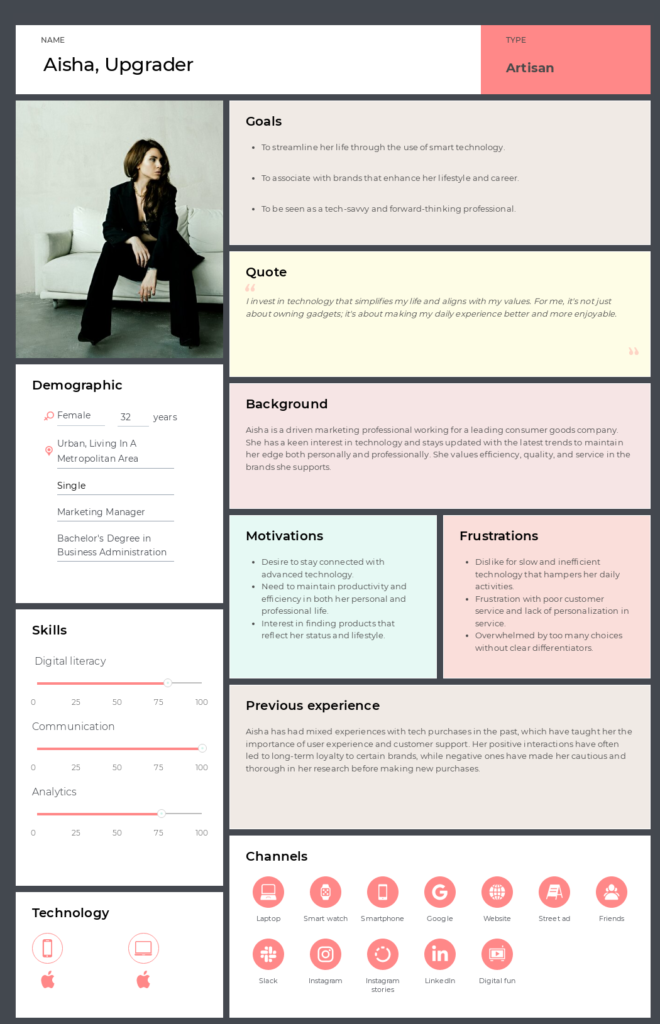
4. Identify key interactions & channels
Identify all the points of interaction between the customer and your business. That could include online interactions, such as visiting your website or engaging with social media, as well as offline interactions, such as entering your store or speaking with sales staff.
5. Map the customer journey
Create a visual representation of the customer journey for each persona, using the stages we listed above or your own.
6. Identify emotions and pain points
For each stage, consider the customer’s emotional response and potential frustrations or pain points. This activity helps understand the customer’s experience more deeply and identify areas needing improvement.
7. Determine opportunities for improvement
Look for ways to enhance the customer experience at each stage. Consider employing new technologies, improving service protocols, training staff more effectively, or redesigning certain aspects of the shopping environment.
8. Create & prioritize actionable strategies
Based on the opportunities you've identified, develop specific, actionable strategies to improve the customer journey. Assign responsibilities and timelines to ensure these strategies are implemented effectively.
9. Test and refine
Enforce the changes and closely monitor their impact. Use customer feedback and additional data collection to understand the effects of your modifications. Continually refine your customer journey map based on new insights and changing market conditions.
10. Share and educate
Share the customer journey map and the insights it provides with all levels of your organization, from senior executives to frontline staff. Educate your team about their role in delivering an exceptional customer experience, ensuring everyone understands and embraces their responsibilities.
Creating a customer journey map requires effort and ongoing attention, but it’s a powerful tool that can dramatically improve how customers perceive and interact with your business.
An example of retail customer journey maps
When you understand why and how to build retail customer journey maps, you might create a journey like that of a woman going grocery shopping in a new neighborhood:
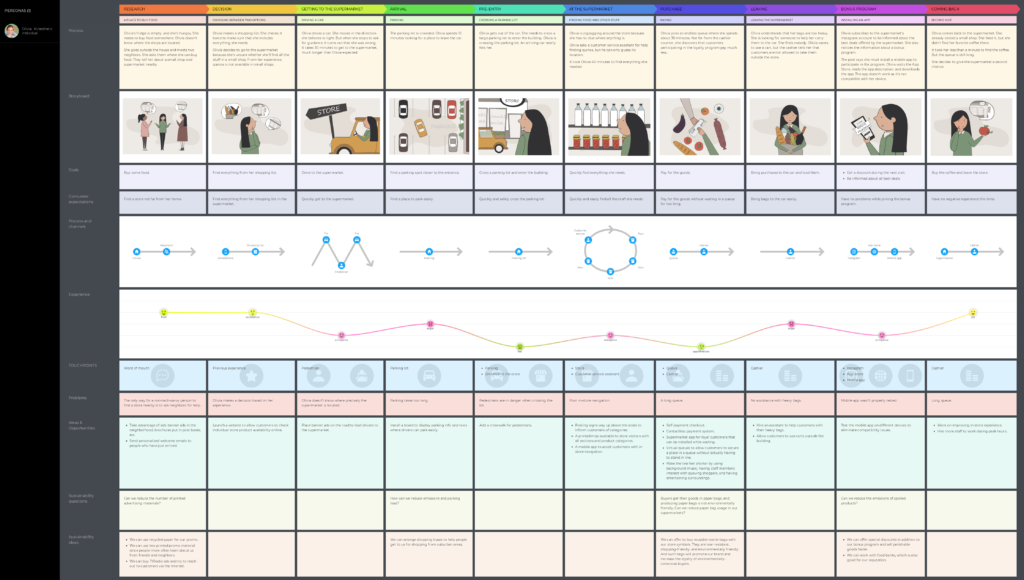
Feel free to use this template as a source of inspiration and tweak them to fit your specific cases. You'll do great!
Related posts
Rate this post
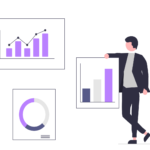
- E-Commerce-Beratung
- Online-Marketing-Beratung
- Omnichannel-Beratung
- Online-Marketing Check-up

- E-Commerce-Entwicklung
- Webseiten-Entwicklung

- Performance-Marketing
- Online-Marketing
- Content-Produktion
- Lokales Online-Marketing

Was ist die Customer Journey?

Die Customer Journey, zu Deutsch "Kundenerlebnisreise", ist der Weg, den ein Kunde von der ersten Interaktion mit einer Marke, einem Produkt oder einer Dienstleistung bis zum endgültigen Kauf oder zur endgültigen Nutzung durchläuft. Sie stellt somit die Summe aller Erfahrungen dar, die Kunden während ihrer Interaktion mit einem Unternehmen sammeln.
Dabei können die Touchpoints, also die Berührungspunkte des Kunden mit der Marke, vielfältig sein und reichen von der Suche in Suchmaschinen, über soziale Medien bis hin zu E-Mails oder direkten Kontakten im stationären Handel.
Welche Phasen durchläuft ein Kunde in einer Customer Journey?
Eine Customer Journey hat im Allgemeinen fünf Phasen:
- Bewusstwerdung – Awareness Phase
- Erwägung – Consideration Phase
- Kauf – Acquisition Phase
- Nutzung – Retention Phase
- Bindung – Loyalty/Advocacy Phase
In der ersten Phase wird der Kunde auf das Produkt oder die Dienstleistung aufmerksam bzw. werden ihm diese bewusst. In der Erwägungsphase vergleicht er verschiedene Optionen und entscheidet sich für ein Produkt. Anschließend wird dann in der Kaufphase der Kauf abgeschlossen, woraufhin in der Nutzungsphase das Produkt verwendet oder die Dienstleistung in Anspruch genommen wird. In der letzten Phase, der Bindungsphase, wird die Beziehung zum Kunden durch Kundenservice und weitere Interaktionen gepflegt.
Was ist das Ziel einer Customer Journey?
Das Ziel einer Customer Journey ist es, Kundenerwartungen und -verhalten zu erkennen und auf dieser Basis maßgeschneiderte Marketingmaßnahmen zu entwickeln. Sie ermöglicht Unternehmen, ihre Kunden besser zu verstehen und ihre Angebote und Dienstleistungen an die Bedürfnisse ihrer Kunden anzupassen. Eine gut durchdachte und gestaltete Customer Journey kann zu höherer Kundenzufriedenheit, Loyalität und letztendlich zu erhöhten Umsätzen führen.
Beispiel für eine Customer Journey
Ein anschauliches Beispiel für eine Customer Journey ist der Kaufprozess in einem Onlineshop:
- Ein potenzieller Kunde sucht auf Google nach einem bestimmten Produkt.
- Er klickt auf eine Anzeige, die ihn auf den Onlineshop führt.
- Dort vergleicht er verschiedene Produkte, liest Kundenbewertungen und entscheidet sich schließlich für ein Produkt.
- Nach dem Kauf erhält er eine Bestätigungs-E-Mail und später eine Benachrichtigung, dass sein Produkt versandt wurde.
- Nach Erhalt des Produkts erhält er eine weitere E-Mail, in der er um eine Bewertung gebeten wird.
- Je nach der Ausprägung der Kommunikation zwischen diesem Kunden und dem Anbieter könnten weitere Interaktionen mit der langfristigen Bindung entstehen.
Die eCommerce Werkstatt – Ihr Partner mit viel Erfahrung
Die eCommerce Werkstatt (ecw) ist Ihr Partner bei der Gestaltung und Optimierung Ihrer Customer Journey. Mit unserer langjährigen Erfahrung seit unserer Gründung im Jahr 2011 und unserem breiten Know-how in Bereichen wie E-Commerce , Online Marketing, Web-Entwicklung , Performance-Marketing, Konzeption, Onlinewerbung, Social Media, SEO und Content Marketing helfen wir Ihnen, Ihre Kundenerfahrung zu verbessern und Ihre Umsätze zu steigern.
Sie möchten mehr über die Customer Journey und unsere Omnichannel-Beratung erfahren oder haben spezielle Fragen zu Ihrem E-Commerce-Geschäft?
Die eCommerce Werkstatt steht Ihnen gerne zur Verfügung. Kontaktieren Sie uns und lassen Sie uns gemeinsam Ihre individuelle Customer Journey gestalten.
Nehmen Sie gerne Kontakt mit uns auf.
Anne pehlke.
Ihr Unternehmen
E-Mail Adresse*
Digitale Customer Journey
- First Online: 30 September 2022
Cite this chapter

- Benjamin Birzer 5
9003 Accesses
Zusammenfassung
In der Wissenschaft kann der Begriff Customer Experience Management (CEM) sowohl aus Anbieter- als auch aus Kundensicht betrachtet werden. Daher erscheint es an dieser Stelle sinnvoll, einen kurzen Bezug zu den theoretischen Grundlagen des CEM vorzunehmen.
This is a preview of subscription content, log in via an institution to check access.
Access this chapter
- Available as PDF
- Read on any device
- Instant download
- Own it forever
- Available as EPUB and PDF
- Durable hardcover edition
- Dispatched in 3 to 5 business days
- Free shipping worldwide - see info
Tax calculation will be finalised at checkout
Purchases are for personal use only
Institutional subscriptions
Berry, L., Wall, E., & Carbone, L. (2006). Articles service clue and customer assessment of the service experience: Lessons from marketing. Academy of Management Perspectives, 20 (2), 43–56.
Article Google Scholar
Brakus, J., Schmitt, B., & Zarantonello, L. (2009). Brand experience: What is it? How is it measured? Does it affect loyalty? Journal of Marketing, 73 (3), 52–68.
Deloitte. (2015). Deutsche Fitnessbranche mit hoher Dynamik. https://www2.deloitte.com/de/de/pages/presse/contents/deutsche-fitnessbranche-mit-hoher-dynamik.html . Abgerufen am 20.11.2021
Grewal, D., Levy, M., & Kumar, V. (2009). Customer experience management in retailing: An organizing framework. Journal of Retailing, 85 (1), 1–14.
Hermanns, A., & Riedmüller, F. (2002). Management-Handbuch: Sportmarketing . Vahlen.
Google Scholar
Hoch, S. J., & Deighton, J. (1989). Managing what consumers learn from experience. Journal of Marketing, 53 (2), 1–20.
Horch, H.-D., Niessen, C., & Schütte, N. (2003). Sportmanager in Verbänden und Vereinen . Sport und Buch Strauß.
Jozic, D., Homburg, C., & Kuehl, C. (2015). Customer experience management: Toward implementing an evolving marketing concept. Journal of the Academy of Marketing Science, 45 (1), 377–401.
Lemke, F., Clark, M., & Wilson, H. (2011). Customer experience quality: An exploration in business and consumer context using repertory grid technique. Journal of the Academy of Marketing Science, 39 (6), 846–869.
Nagel, S. (2006). Sportvereine im Wandel. Akteurtheoretische Analysen zur Entwicklung von Sportvereinen . Hofmann.
Niessen, C. (1998). Management in Sportvereinen und -verbänden . Academia Verlag Sankt Augustin.
Oettgen, N. (2008). Integriertes Marketing für professionelle Fußballvereine: Eine Analyse der Anspruchsgruppenorientierung in der deutschen Fußballbundesliga . Peter Lang.
Patricio, L., Fisk, R. P., Falcao e Cunha, J., & Constantine, L. (2011). Multilevel service design: From customer value constellation to service experience blueprinting. Journal of Service Research, 14 (2), 180–200.
Poulsson, S., & Kale, S. (2004). The experience and commercial experiences. The Marketing Review, 4 (3), 267–277.
Puccinelli, N., Goodstein, R., Grewal, D., & Price, R. (2009). Customer experience management in retailing: Understanding the buying process. Journal of Retailing, 85 (1), 15–30.
Sarmento, T., & Patricio, L. (2010). Mobile service experience prototyping: A holistic view of the service experience. Academia Verlag.
Schwier, J. (o. J.). Entwicklungstendenzen der Sportkultur – Zur Popularisierung innovativer Bewegungsformen . Universität Giessen.
Thuering, M., & Mahlke, S. (2007). Usability, aesthetics and emotions in human – Technology interaction. International Journal of Psychology, 42 (49), 253–264.
Vargo, S. L., & Lusch, R. (2004). Evolving to a new dominant logic for marketing. Journal of Marketing, 68 (1), 1–17.
Verhoef, P. C., & Lemon, K. (2009). Customer experience creation: Determinants, dynamics and management strategies. Journal of Retailing, 85 (1), 31–41.
Weineck, J. (2004). Sportbiologie . Spitta.
Wetterich, J., Eckl, S., & Schabert, W. (2009). Grundlagen zur Weiterentwicklung von Sportanlagen . Sportverlag Strauß.
Zomerdijk, L. G., & Voss, C. A. (2010). Service design for experience-centric services. Journal of Service Research, 13 (1), 67–82.
Download references
Author information
Authors and affiliations.
Internationales Fußball Institut, Ismaning, Deutschland
Benjamin Birzer
You can also search for this author in PubMed Google Scholar
Corresponding author
Correspondence to Benjamin Birzer .
Editor information
Editors and affiliations.
Hochschule für angewandtes Management, Ismaning, Deutschland
Mark Harwardt
straightlabs GmbH & Co. KG, Grünwald, Deutschland
Peter F.-J. Niermann
Andre M. Schmutte
Axel Steuernagel
Rights and permissions
Reprints and permissions
Copyright information
© 2022 Der/die Autor(en), exklusiv lizenziert an Springer Fachmedien Wiesbaden GmbH, ein Teil von Springer Nature
About this chapter
Birzer, B. (2022). Digitale Customer Journey. In: Harwardt, M., Niermann, P.FJ., Schmutte, A.M., Steuernagel, A. (eds) Praxisbeispiele der Digitalisierung. Springer Gabler, Wiesbaden. https://doi.org/10.1007/978-3-658-37903-2_9
Download citation
DOI : https://doi.org/10.1007/978-3-658-37903-2_9
Published : 30 September 2022
Publisher Name : Springer Gabler, Wiesbaden
Print ISBN : 978-3-658-37902-5
Online ISBN : 978-3-658-37903-2
eBook Packages : Business and Economics (German Language)
Share this chapter
Anyone you share the following link with will be able to read this content:
Sorry, a shareable link is not currently available for this article.
Provided by the Springer Nature SharedIt content-sharing initiative
- Publish with us
Policies and ethics
- Find a journal
- Track your research
Online Buyers
Site abandonment, consumer panel, customer support, cx/ux design.

Get Started for Free
Zero coding experience required. Start collecting data in minutes
Case Studies
Documentation, announcements.

Use the Bizrate Insights Merchant API to Streamline Data Collection
Online shopper abandonment rates: what they mean and how to lower them.

Understanding the nuances of shopper behavior is essential in ecommerce. Of particular importance is the abandonment rate for various online actions, from visiting a specific landing page to completing a purchase. The proportion of users starting but not finishing an action can reveal issues in your site’s functionality, visual appeal, or calls to action. This article explores the relevance of different abandonment rates and how to recognize and analyze them when it comes to online shopping.
Understanding Abandonment Rates
Abandonment rates provide insights into online shoppers ‘ decision-making, revealing obstacles to conversion that you can address. Understanding these rates allows ecommerce businesses to identify problems customers face. Addressing these problems enhances the overall shopping experience and will enable companies to pinpoint areas that need improvement.
Website, page, form, and shopping cart abandonment each present unique challenges. The first step in fixing these issues is to recognize the differences between them and what approach is the best fit for each. Then, you can improve the customer journey by simplifying the checkout process and using retargeting to better engage shoppers. Likewise, increasing transparency will bolster consumer trust and help raise your conversion rates.
Website Abandonment Rate
Website abandonment refers to users leaving a website before completing the desired action, such as making a purchase. You can calculate the website abandonment rate by dividing the number of visitors who leave the website without completing the desired action by the total number of visitors during a specific period, typically expressed as a percentage.
This metric can be further divided into bounce rate and exit rate. In the context of ecommerce sites, both bounce and exit rates are important metrics for understanding user behavior, but they measure different aspects.
Bounce Rate
- Definition : Bounce rate refers to the percentage of visitors who land on a webpage and leave without interacting further with the site. Essentially, they “bounce” away after viewing only one page.
- Significance : A high bounce rate may indicate that the landing page doesn’t meet visitors’ expectations or fails to provide the information they seek. It could suggest issues with content relevance, site usability, or load times.
- Example : If a user lands on a product page, spends a few seconds without clicking anything, and then leaves the site, that action would contribute to the bounce rate for that page.
- Definition : Exit rate represents the percentage of sessions that end with a particular page being the last one viewed in the session. It shows the frequency with which users exit the site after viewing a specific page.
- Significance : Exit rate helps identify pages that are more likely to be the final step in a user’s journey before leaving the site altogether. While high exit rates don’t necessarily indicate a problem, they can highlight pages where optimization efforts may be needed.
- Example : If a user navigates through several pages on an ecommerce site but ultimately exits the site after viewing the checkout page, that action would contribute to the checkout page’s exit rate.
When either of these rates are high, it signifies lost opportunities for conversion and can indicate underlying issues with the website’s design, usability, or content. Several factors can contribute to website abandonment, including slow loading times, complicated navigation, unclear call-to-action buttons, excessive distractions, unexpected costs, and lack of trust in the website’s security or credibility.
Strategies to Reduce Website Abandonment
Enhancing website speed and performance is crucial for ensuring that visitors have a smooth and seamless browsing experience. This involves optimizing image sizes, minimizing HTTP requests, and utilizing content delivery networks (CDNs) to improve load times , ultimately reducing user frustration and encouraging prolonged engagement.
Simplifying navigation and checkout processes makes it easier for visitors to find what they need and complete transactions quickly. Implementing intuitive navigation menus, reducing the number of checkout steps, and offering guest checkout options minimize friction and increase the likelihood of conversion.
Optimizing content for clarity and relevance ensures that users are presented with engaging and informative material that effectively addresses their needs. Regularly updating content, using clear headings, and tailoring content to user pain points enhance engagement and encourage exploration.
Providing transparent pricing and shipping information builds trust with customers by displaying all associated costs up front, thus reducing abandonment due to unexpected charges.
Ensuring website security through measures such as SSL certificates and trust seals further instills confidence in users, alleviating concerns about data privacy and online fraud.
Offering incentives or discounts can motivate users to complete their purchases by creating a sense of urgency and incentivizing action. This can ultimately reduce abandonment rates and drive conversions.
Page Abandonment
While similar in many ways to site abandonment, page abandonment is a more detailed metric that identifies per-page issues. When visitors leave a specific page at higher than average rates, it suggests possible barriers or disinterest that can impede the site’s conversion goals. Calculate the per-page abandonment rate by dividing the number of users exiting a page without completing the desired action by the total number of users who visited the page, expressed as a percentage. Since total bounce rates range from 26-70% , it’s important to consider individual page rates and look for outliers.
Common causes of high per-page abandonment include slow loading times, irrelevant or confusing content, intrusive pop-ups, poor mobile optimization, complex navigation, and a lack of clear next steps or conflicting calls to action.
Businesses can optimize their content and design to minimize per-page abandonment. They should strive for fast loading times, provide relevant and engaging content, reduce distractions, optimize for mobile responsiveness, simplify navigation, and prominently feature clear calls to action.
Web Form Abandonment
Web form abandonment occurs when users start filling out a form on a website but fail to submit it. It can lead to lost leads, reduced conversion rates, and missed opportunities for engagement or sale. The web form abandonment rate is calculated by dividing the number of users who abandon a form without completing it by the total number of users who initiated the form, which is expressed as a percentage.
According to ProFaceoff , 81% of users have abandoned an online form after beginning to fill it out.
Common Causes of Web Form Abandonment Include:
Complex or lengthy forms: 27% of users have abandoned forms due to length.
Mandatory fields that users find intrusive : Asking for a phone number lowers form conversion rates by 5%, followed by street address (4%), a person’s age (3%), and city and state (2%).
Unclear instructions or error messages : WPForms reports that more than 67% of site visitors will abandon a form forever if they encounter any complications
Lack of trust in the website’s security measures: 29% of visitors abandon forms if they have any security concerns about their data.
Improving Web Form Usability and Conversion
Streamline forms by reducing the number of fields to improve web form usability and conversion. Always use clear and concise labels and instructions for each step. It’s also helpful to provide progress indicators and offer autofill options. Mobile responsiveness is a prerequisite, as is optimizing your site for various devices and browsers. Enhance your site’s trust signals by using security badges or privacy statements.
Shopping Cart Abandonment
Shopping cart abandonment occurs when users add items to their online shopping carts but leave the website without completing the purchase. It’s a critical metric that reflects lost potential revenue and highlights friction points in the checkout process. You can calculate the shopping cart abandonment rate by dividing the number of completed purchases by the number of initiated shopping cart sessions, subtracting the result from 1, and expressing it as a percentage.
The Baymard Institute reports that 70.19% of online shopping carts are abandoned. A rate below that is considered good for ecommerce sites, while a higher rate definitely has some room for improvement.
Common Reasons for Shopping Cart Abandonment:
- Unexpected shipping costs
- Complicated checkout processes
- Lack of payment options
- Security concerns
- Lengthy or confusing forms
- Distractions or interruptions during the checkout process
Implementing Cart Recovery Strategies
Addressing shopping cart abandonment is crucial for increasing conversion rates and maximizing revenue in ecommerce. Here are some strategic approaches you can employ to combat this issue:
- Abandoned Cart Emails : Abandoned cart emails are effective for cart recovery. You can set them to send when a shopper doesn’t check out. These emails should be personalized, showing the abandoned items, customer reviews, and similar product recommendations. Limited-time discounts can also encourage purchase completion.
- One-Click Checkout Options : One-click checkout options simplify buying by storing payment and shipping details. This allows for quicker future purchases and appeals to those who value convenience.
- Simplifying the Checkout Process : Reducing the complexity of the checkout process is vital. Businesses should limit the steps involved, only ask for necessary information, indicate checkout progress, and offer guest checkout to lessen abandonment.
- Transparent Pricing and Shipping Information : To avoid cart abandonment due to unexpected costs, businesses should disclose all fees, including taxes and shipping, early on. Providing shipping choices of varying costs can accommodate different customer needs.
- Retargeting Ads : Retargeting ads can effectively bring back customers who didn’t make a purchase. These ads, especially dynamic ones showing viewed products, can reappear on other sites or social media, increasing the chances of sale completion.
Conducting Surveys to Analyze Abandonment Rates
Surveys offer valuable insights into the reasons behind abandonment, helping businesses pinpoint specific pain points and areas for improvement in the user experience. By gathering feedback through surveys, companies can make informed decisions about website design, content, and functionality tailored to meet customer needs and preferences.
Gaining Key Insights Into Customer Behavior and Preferences
Surveys provide a window into customer behavior and preferences, allowing businesses to adapt their strategies and offerings to better align with customer expectations and enhance overall satisfaction.
Case Study: Orvis
Orvis, a prominent retailer specializing in outdoor goods , faced a daunting challenge. Despite their robust online presence and nationwide reach, they lacked crucial insights into their website’s visitor experience. Customers were coming and going without making purchases, leaving Orvis puzzled about the reasons behind the abandonment. However, they needed actionable data to prioritize enhancements and elevate the online shopping journey.
Orvis turned to the Bizrate Insights Site Abandonment Solution to investigate the problem further. By engaging customers as they left the site, Orvis gleaned invaluable insights into their pain points and frustrations. With this newfound knowledge, they swiftly implemented changes to mitigate abandonment rates and enhance the online shopping experience.
Orvis gained a deeper understanding of its lost customers, enabling it to fine-tune its marketing strategies in real time. Jason Pafford, Orvis’ Voice of the Customer and Communications Supervisor, praised the outcome, saying, “The site abandonment solution provided us with verbatim customer feedback on the design of the site.”
Orvis has underscored its dedication to enhancing the customer experience by leveraging data collected from individuals who have abandoned its website. Focusing on particular issues highlighted in the survey, Orvis enhanced its customer service approach, solidifying its status as a brand that prioritizes customer satisfaction.
As Mr. Pafford emphasized, “In today’s retail world, being customer-centric is imperative for continued success.”
In the fast-paced world of ecommerce, every click counts toward revenue generation. Continuous monitoring and optimization of abandonment rates have become essential practices. These rates are crucial barometers of customer engagement and satisfaction, mirroring the success of the online shopping journey. Exploring the subtleties of abandonment rates and executing strategic plans to reduce them can help companies lay the foundation for improved performance, elevated conversion rates, and enduring expansion.
Seize the opportunity to revolutionize your ecommerce journey by proactively addressing abandonment rates. By prioritizing abandonment rate optimization, you lay the foundation for sustained growth, heightened customer satisfaction, and unparalleled business success. Get in touch and gain deeper visibility into the customer journey!
Transloading 101: Logistics Guide to Understanding This Essential Shipping Process
Verified & Reviewed
Last updated on March 5, 2024 Written By Meredith Flora

Subscribe for More
Table of Contents
What is transloading?
How does transloading work, common transloading challenges, shipbob’s winning approach to shipping and logistics, ecommerce champions outsource fulfillment to shipbob, get started with shipbob, transloading faqs.
When it comes to the long-distance transfer of goods, you probably want the best of both worlds: economical rail transport and flexible over-the-road trucking. With transloading, you get just that. Transloading involves completing the transit with unloading of goods from rail cars and loading them onto trucks or vice versa.
At a time when cross-border commerce and shipping are booming, using multiple means of transport can complicate your operations and require the implementation of sophisticated shipping processes.
This isn’t a process ecommerce companies want to focus on. It’s much more important to focus on selling their goods rather than managing transloading end-to-end. That’s why many businesses outsource shipping to third-party logistics ( 3PL ) providers like ShipBob.
Interested to know more about this form of long-haul transportation ? This article is perfect for businesses or individuals looking for information on what transloading is, how it works, and the benefits of using transloading services of logistics companies.
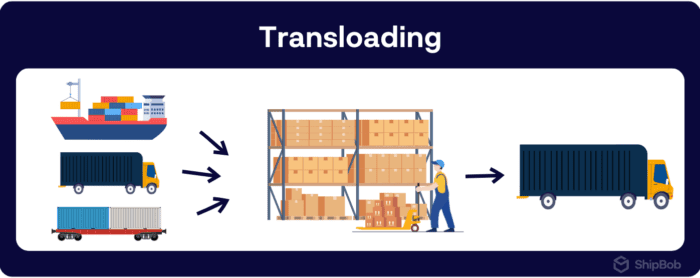
Transloading is process of moving goods between different modes of transportation. As the term suggests it involves the unloading of freight from one transport vehicle and loading it onto another.
Typically, transloading happens between rail cars/containers and trucks. When the location isn’t rail-served, planes and ocean freight containers may also be used as a method of transportation.
Transloading is used in the shipping and logistics industry for its ability to reduce costs of shipping, while offering a lot more flexibility.
Transloading vs. other shipping terms
You might be wondering how transloading is different than cross-docking , drayage , or other modes of transport.
In this section, we compare and contrast transloading with other shipping terms.
The benefits of transloading
The benefits of using transloading services range from supply chain versatility to lowered logistics and transportation costs, and freight consolidation. Ultimately, it can help businesses overcome common logistical challenges and streamline their shipping operations.
- Enables supply chain versatility: Since there are multiple modes of transportation involved, it’s possible to get our goods delivered in different ways. It also has almost unending capacity and cross-border reach, to handle more freight shipping as your business expands. This adds to the flexibility that you can leverage.
- Lowers costs: You can use the modes of transport that are most economical to get your goods from point A to B. For example, if you are able to use rail cars for the majority of the route, your fuel costs are lowered significantly. Once the goods have reached the region where they’ll be stored and shipped, shippers can then use trucks for the remaining route, making transportation faster and more cost effective.
- Promotes freight consolidation: If you have a lot of freight situated in different locations, but the end destination is the same then you may transport all of it in fewer rail cars. You can send the trucks from each location to transload facilities along the rail line and freight can be consolidated into the same rail car as it moves closer to the destination.
- Overcome logistics challenges: Whether there is a lack of direct shipping routes or limited road access along the transport route, transloading can offer a way to still deliver the goods using multiple modes of transport.
Each transloading workflow depends on the freight’s origin and destination, the type of goods being transported, how it’s packed, timelines, the budget, and so many other factors. But overall, here are some of the basic steps to how transloading works:
- Load freight onto a truck for transport to a transload facility.
- At the transloading facility, the goods are sorted and organized based on the destination, size, weight, and other factors.
- Transfer freight to rail cars, using cranes, forklifts, or other equipment, at the transload facility. The type of transfer method and type of rail car (e.g., tank car, flat car, or boxcar) depends on the type of product being transported.
- The freight may be loaded from the rail cars back into trucks if the final delivery location is not accessible by train.
Any type of freight, from lumber and metals to liquids, frozen foods, and heavy machinery, can be transloaded. Here is how various products can be transloaded.
Note: Today, since most goods are shipped in standardized (intermodal-friendly) rectangular steel containers, transloading has become a lot easier.
In this section, we discuss the common challenges businesses face during the transloading process.
Managing multiple transportation modes
Transloading is a very complex process. Coordinating different modes of transportation during the transloading process can be very challenging. Businesses need to ensure that each mode of transportation is properly synchronized and communication lines between all relevant parties remain open to avoid delays and additional costs.
You may also be slapped with additional handling costs, such as storage costs, extra packaging and labeling costs, and labor costs for loading and unloading goods. This can reduce the cost-effectiveness of the transportation process.
Ensuring product safety and security
It’s very important to ensure the safety and security of products during the transloading process. To prevent theft of products during transportation, you must have a strict tracking process in place, it would also help to install security cameras in the cargo holds.
Damage to the freight can happen due to handling, transfer, and storage – especially in the case of fragile goods. To avoid such issues, develop and implement standard operating procedures (SOPs) for transloading and conduct regular training sessions on the same.
Transloading can also pose safety risks to the workers handling and transporting the goods. To avoid this, you must conduct inspections and audits to identify and address potential safety hazards and ensure all machinery is working properly.
Navigating customs and regulations
When a package gets stuck in customs , it’s is a headache for retailers. Navigating customs clearance formalities and regulations when transloading products for international shipping can be overwhelming. It is important to understand and comply with customs requirements to avoid delays and penalties.
Transloading requires a lot of meticulous planning and coordination. ShipBob’s use of technology can help businesses optimize their transloading operations and improve efficiency. This explains why ShipBob is a well-recognized as a leader in the ecommerce fulfillment space.
If you want to stop stressing about transportation, and focus on growing your business, consider outsourcing fulfillment to ShipBob. We streamline shipping and logistics operations so that you can concentrate your efforts on what really matters: business innovation, strategy, and growth.
Our services are tailored to meet the needs of direct-to-consumer brands, selling to customers located anywhere in the world.
The importance of tech-enabled shipping in ecommerce
ShipBob has created powerful technology to provide brands with best-in-class inventory, order, and warehouse management. In the shipping and logistics industry, such a technology is essential to helping businesses optimize their shipping operations and improve efficiency.
Our platform offers brands with a real-time look at inventory and orders, predictive data and analytics, and optimized shipping.
ShipBob’s platform acts as a single source of truth across fulfillment centers, no matter which facilities you’re using within ShipBob’s global fulfillment network. It tracks inventory and orders in real time and allows users to manage, edit, and customize orders. You can even set reorder points to alert you when its time to restock.
ShipBob even has built-in supply chain-related reports and analytics to give you a competitive advantage.
How ShipBob helps businesses grow
Are you looking to grow global ? ShipBob offers international shipping and global fulfillment solutions so you can reach your customer base no matter where they’re located.
ShipBob has a global network of fulfillment centers with facilities in the US, Canada, the UK, EU, and Australia. Our fulfillment network of over 50 warehouses can help businesses seamlessly scale their operations and meet the demands of a growing customer base.
Our proprietary technology and team of proven experts work together to get orders to customers safely and on time.
If you want to secure maximum benefits from transloading and other fulfillment processes, ShipBob can help. This is why so many ecommerce businesses outsource their supply chain management to us.
We help you get the best transport rates and maximum flexibility when transporting your freight.
“ShipBob’s advanced software helps us quickly understand shipping costs and how to improve shipping times by being closer to where our customers are.” Andrea Lisbona, Founder & CEO of Touchland
ShipBob is constantly evolving and adding new features to enhance the merchant experience and create a streamlined supply chain. Here are some of ShipBob’s features that can help make your logistics more efficient.
Inventory receiving in hub and spoke model
ShipBob’s hub spoke distribution model allows you to send inventory to a dedicated receiving facility where products are inbounded and then sent out to spoke fulfillment centers. ShipBob’s inbound receiving and distribution process has quick WRO creation and receiving for designated hub sites .
Orders are fulfilled at the spoke facilities located closer to your end customer. This model allows for quick and accurate receiving and faster, more cost-effective shipping.
By placing goods closer to the end customer, you reduce transloading transit times.
Inventory transfer between ShipBob warehouses
Inventory transfer between two ShipBob warehouses offers faster shipping options for your customers and helps you save on shipping costs.
To ensure that inventory transfers are planned and executed without any glitches, our platform offers tracking throughout every stage and full visibility into inventory levels throughout your supply chain.
Brands can leverage our Inventory Placement Program where we place your inventory in our fulfillment centers on your behalf based on ideal distribution. This program takes the burden of distributing inventory off of your team, allowing you to focus on other aspects of your business.
Cross-docking for inventory distribution across ShipBob warehouses
To enable faster distribution, we de-consolidate containers or LTL shipments. And then, ShipBob distributes them to multiple warehouses or a cross-regional fulfillment center of your choice. Thus, we offer a factory-floor-to-customer-door cross-docking solution for your brand.
Interested in leveraging ShipBob’s fulfillment solution? Connect with our team to learn how we can streamline your order fulfillment and logistics.
Below are answers to common questions about transloading.
How does ShipBob’s fulfillment process work?
When you leverage ShipBob’s outsourced fulfillment solution, the entire journey from the factory floor to the customer’s door can be fully managed by ShipBob. Our best-in-class technology, team of supply chain experts, and network of fulfillment centers play key roles in making order fulfillment seamless.
How does transloading help businesses save on shipping costs?
By using the rail car for shipping goods, at least for some part of the way, you save on fuel and transport costs.
In case goods are not in the same location but are going towards the same destination, distribute the goods to warehouses along the rail route, so that they can be transloaded and consolidated into the same rail car.
What are the common challenges faced during the transloading process?
Challenges faced during transloading range from issues managing multiple transportation modes to product safety and security, and navigating customs. And these challenges impact the efficiency and cost-effectiveness of shipping operations.
How does ShipBob handle international shipping?
ShipBob offers crossborder solutions that include access to the best rates and timelines for international shipping and a network of fulfillment centers across the globe. When required, we also support clearing customs.
What’s more, our proprietary technology and team of proven experts help you get orders to global customers safely and on time.
Your supply chain 'easy' button
With shipbob.
Order fulfillment services
You omnichannel fulfillment partner that's an extension of your brand, from unboxings to 2-day shipping.
Warehouse management
Have your own warehouse? Get ShipBob WMS to reduce mis-picks, save time, and improve productivity.
Global scalability
Grow into new geographies with ShipBob's international presence in the US, UK, EU, Canada, and Australia.
Written By:

Meredith Flora
Meredith is a Content Marketing Specialist at ShipBob, where she writes articles, eGuides, and other resources to help growing ecommerce businesses master their logistics and fulfillment.
Read all posts written by Meredith Flora
Subscribe to our blog
Join tens of thousands of ecommerce brands to get more articles like this and our latest resources delivered to your inbox.
Just for you
Latest tips to improve ecommerce logistics.

Dynamic Slotting Guide for Ecommerce Warehousing

How to Calculate Finished Goods Inventory & Why it’s Important for Business

Understanding Virtual Warehousing: Benefits & Use Cases for Ecommerce
Shipbob offers outsourced fulfillment and a wms if you have your own warehouse. request a quote by filling out the form..
A fulfillment expert will get back to you shortly.
Loading Job...
Job description:.

IMAGES
VIDEO
COMMENTS
5 stages of the eCommerce customer journey. Your customers' overall journey can be broken down into five key stages. 01. Awareness. Your customer stumbles across your brand for the first time. Be it through an ad, social media, word of mouth, or SEO-they are now aware of your products.
Introduction to the Customer Journey in E-Commerce. In the bustling realm of e-commerce and dropshipping, understanding the path a client takes before they hit 'purchase' is crucial. This path, often called the customer journey, is intricate and multi-layered. Let's dive into this essential concept. 1.1.
An ecommerce customer journey map is a visualization of all the potential experiences a customer may have with your organization. Such a map also highlights the sequences those experiences are most likely to occur in. It can allow you as a business to identify strengths and weaknesses, and thus make improvements where needed.
How to build the eCommerce Customer Journey Map. 1. Build a document template where to record customer journey stages (a Google Sheets or Excel spreadsheet). 2. Write down all touchpoints between you and your customers (owned media and paid media). 3.
Touchpoints: meeting a courier, signing delivery documentation. Here is what the backbone of the e-commerce customer journey map will look like. See a full-size image. In the same way, you can divide the purchasing process into "Review cart", "Checkout", "Payment", and other stages and analyze them in your map.
Step 4: List actions your customers take at each journey stage. The listing stage helps you improve micro-engagements and create a seamless, personalized customer experience. As ecommerce customer journey mapping is a continuous process, it's crucial to consider customers' steps to explore, engage, and convert.
The real key, however, is using your existing data to map the ecommerce customer journey based on psychological principles to drive more sales. 1. Monitor how customers interact with your ecommerce business. Understanding how users move through your store is critical to producing sales that follow a psychologically informed model.
Pricing starts at $29/month per user. Touchpoint - Touchpoint is an intuitive web-based app for creating customer journey maps and analyzing customer behavior. It is built with collaboration in mind and is ideal for those retailers looking for a straightforward and scalable solution. Pricing is available on request.
Customer journey maps help you determine which team is responsible for key actions and support at each step of the way. 4. Make improvements and convert more visitors into customers. With a clear overview of the customer's journey, your team can quickly home in on the touchpoints where something's going wrong.
3. Mold your customer journey to the needs of your visitors. The decision to purchase ultimately comes down to one major thing: your relationship with your customers. Again, this means understanding consumer psychology and building a strong relationship by providing value at each stage of their journey.
Ecommerce customer journey is a process that customers go through to buy a product from an online business. It starts when the customers research and learn about the product and ends when the customer completes their order and contacts customer service. This journey includes when consumers look over product offerings, compare their options, and ...
5. Loyalty. The customer loyalty stage is the culmination of all the previous steps of the customer's eCommerce journey. Most online stores fall short of providing a pleasant experience for clients during the previous stages. The inability to do so prevents them from enjoying a high lifetime value from their clients.
Acquisition. Retention. Advocacy. But in the spirit of customer centricity, we're choosing to rename the stages of the customer journey to put ourselves in the customers' shoes. Here's quick a visualization of five stages in the ecommerce customer journey, and what each means for your customers: Five stages of the ecommerce customer ...
A customer journey map helps you gain a better understanding of your customers so you can spot and avoid potential concerns, make better business decisions and improve customer retention. The map ...
The buyer's journey follows the customer experience from initial awareness of a brand to buying a product. The customer journey extends beyond the purchase and follows how customers interact with your product and how they share it with others. Customer journey stages. Every lead goes through several stages to become a loyal customer.
Creating a retail customer journey map is a strategic process that helps businesses visualize their customers' path from initial contact through various interactions to final purchase and potentially beyond. Here's a detailed, step-by-step guide to building an effective map: 1. Define your objectives. Start by clarifying what you hope to achieve with your customer journey map.
The model is based on a Customer Journey Map made of the five main phases the consumer goes through while purchasing on a B2c eCommerce website: landing, product identification, product ...
Das Ziel einer Customer Journey ist es, Kundenerwartungen und -verhalten zu erkennen und auf dieser Basis maßgeschneiderte Marketingmaßnahmen zu entwickeln. Sie ermöglicht Unternehmen, ihre Kunden besser zu verstehen und ihre Angebote und Dienstleistungen an die Bedürfnisse ihrer Kunden anzupassen. Eine gut durchdachte und gestaltete ...
Dieser Beitrag setzt sich vertiefend mit den bekannten Frameworks zur Customer Journey und zu Touchpoints sowie den relevanten MOTs auseinander. Ausgehend von den Grundprinzipien im E-Commerce wurde das Grundverständnis der Abläufe hergestellt. Weiterhin wurde der Kaufprozess von Kunden in der Tiefe analysiert.
Auf der Customer Journey geht es um Emotionen. Jeder Kontakt und jede Interaktion in der Anbahnung und im Verlauf der Geschäftsbeziehung ist dabei von Bedeutung. Somit gilt es, alle Berührungspunkte zu betrachten, um die komplette Customer Journey abzubilden. Erklären Sie, was Ihr Unternehmen und Ihre Lösung auszeichnet.
Customers interact with companies through various points of contact on various channels. In this sense, companies need to understand the consumer's journey in order to create the right touchpoints (Lemon and Verhoef 2016).The increasing popularity of social networks as an effective communication has evolved electronic commerce to social commerce (Liang and Turban 2011).
An e-commerce store is open to anyone who can visit it online. With digital marketing, brands can more easily reach and connect with their target audience. In the past, this was accessible only to ...
4: Add Products. In your Shopify admin, click on "Products" and then "Add product". You'll have to enter details for all the products you want to list. Fill in the product title, description, price, and other relevant details. Make sure to also add high-quality product images. Also, you'll see an option for "Collections," which ...
Eine Definition des Untersuchungsgegenstands aus Kundensicht, gibt Jozic et al. , wie folgt an: „Customer Experience bezeichnet die Summe aus sensorischen, affektiven, gedanklichen und verhaltensbezogenen Reaktionen einer Person auf einen Anbieter oder eine Marke, die durch das Durchleben mehrerer Touchpoints im Zeitablauf (Customer Journey ...
Seize the opportunity to revolutionize your ecommerce journey by proactively addressing abandonment rates. By prioritizing abandonment rate optimization, you lay the foundation for sustained growth, heightened customer satisfaction, and unparalleled business success. Get in touch and gain deeper visibility into the customer journey!
Given below is a sample for crafting the resume for an e-commerce specialist with over three years of experience: Monika Paul. Pune, Maharashtra | (91) 92544-59888 | [email protected] Summary Seasoned e-commerce specialist with over five years of experience in managing various online sales channels, customer relationship management and ...
Ecommerce champions outsource fulfillment to ShipBob. If you want to secure maximum benefits from transloading and other fulfillment processes, ShipBob can help. This is why so many ecommerce businesses outsource their supply chain management to us. We help you get the best transport rates and maximum flexibility when transporting your freight.